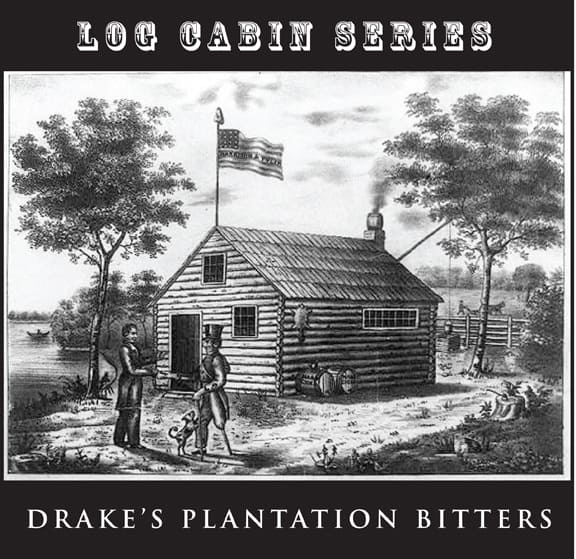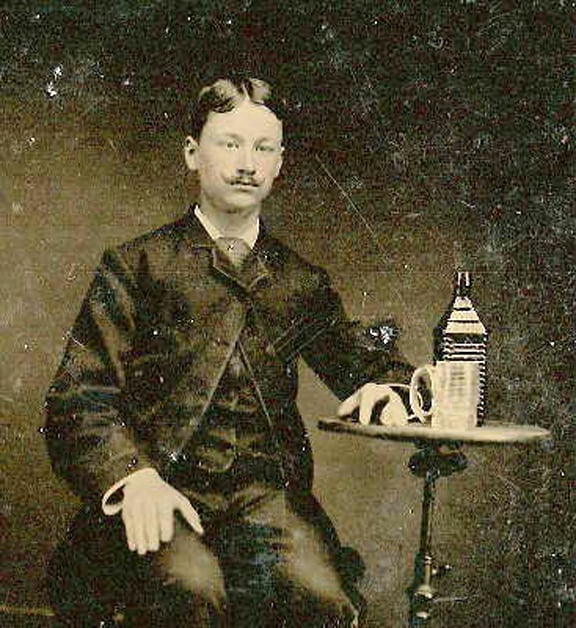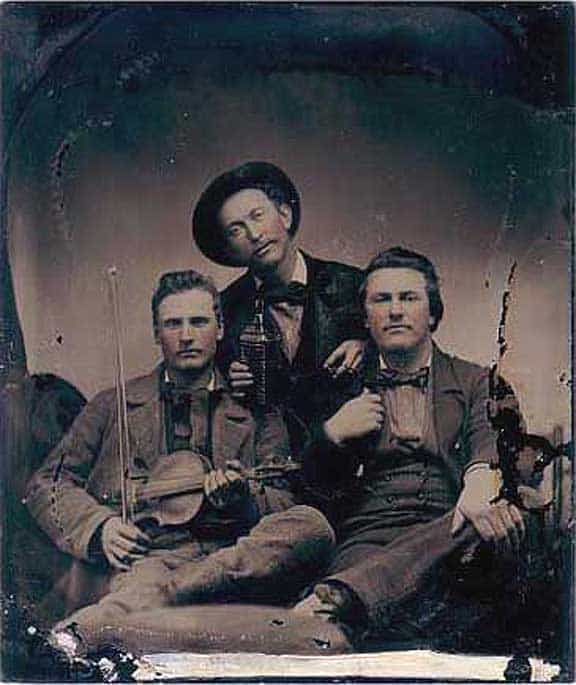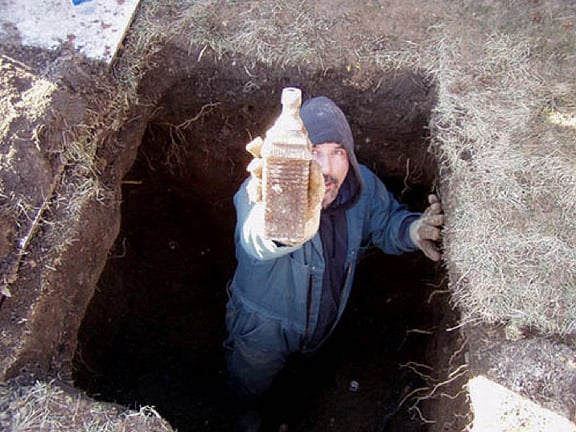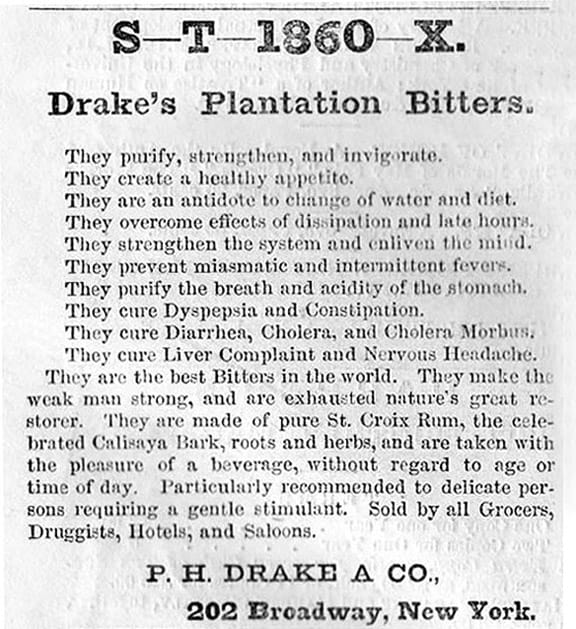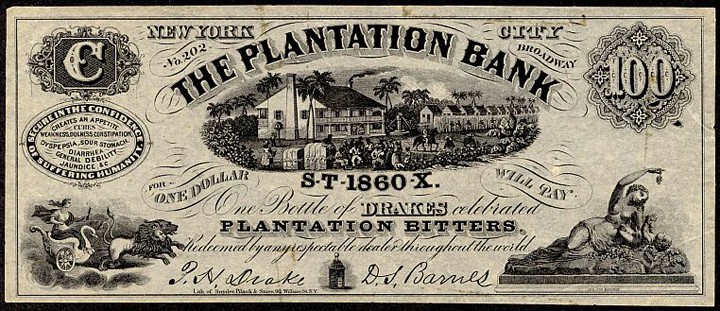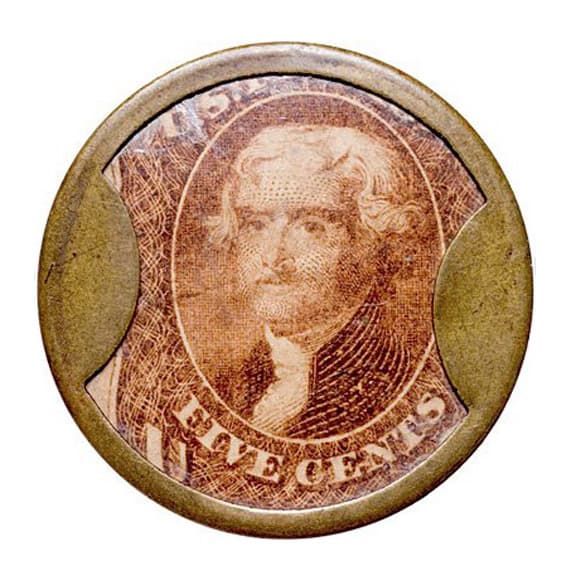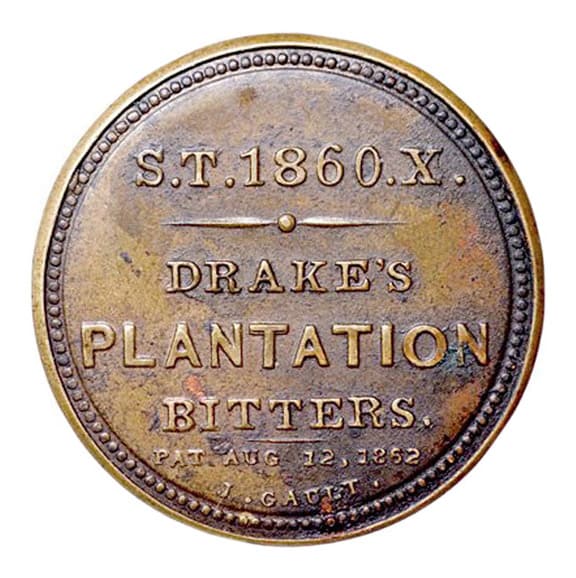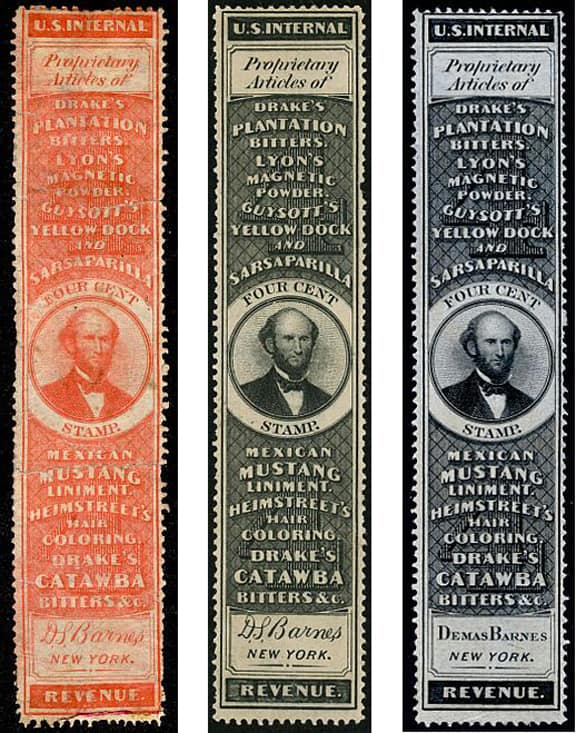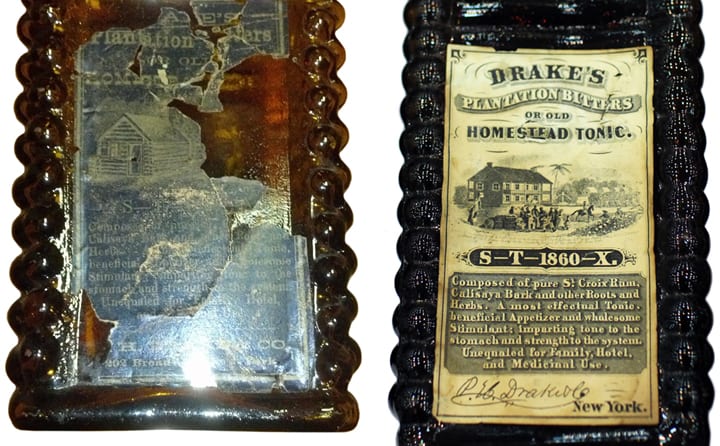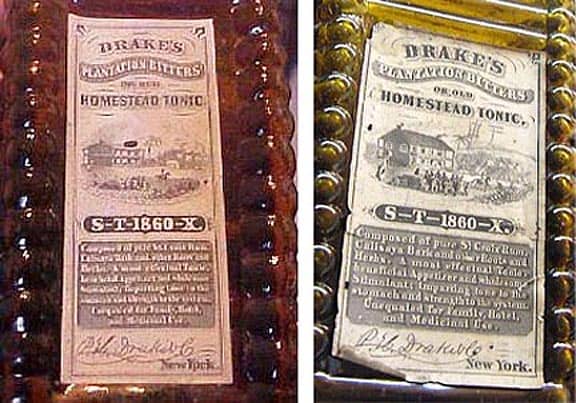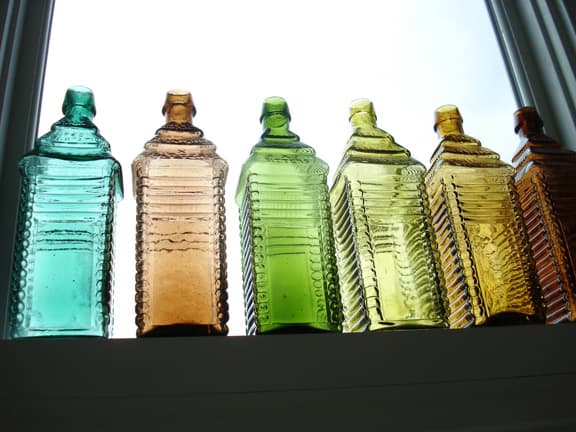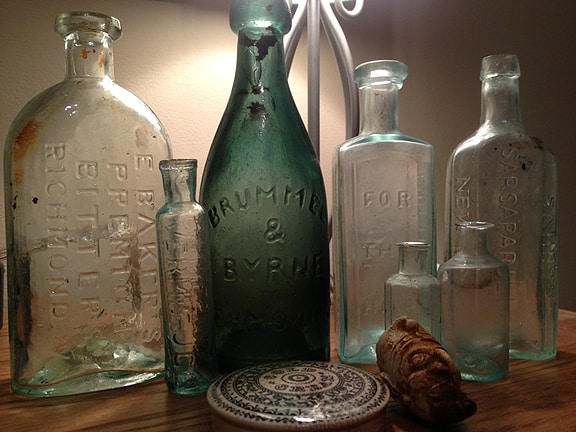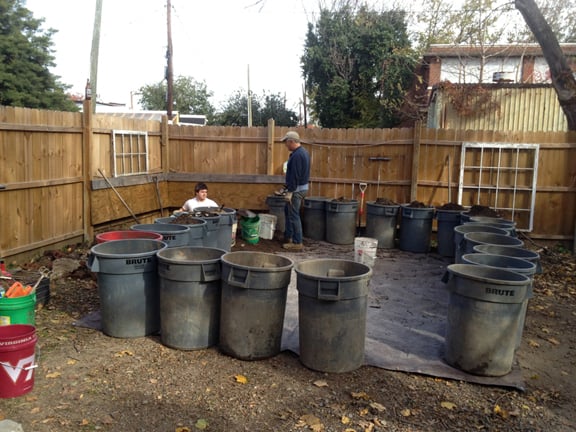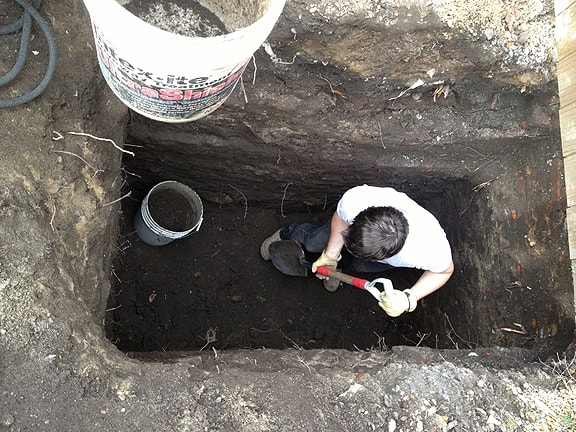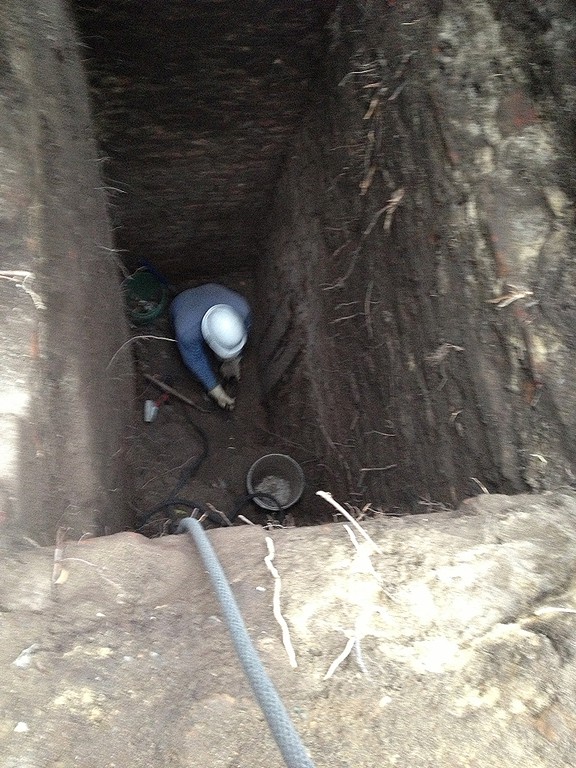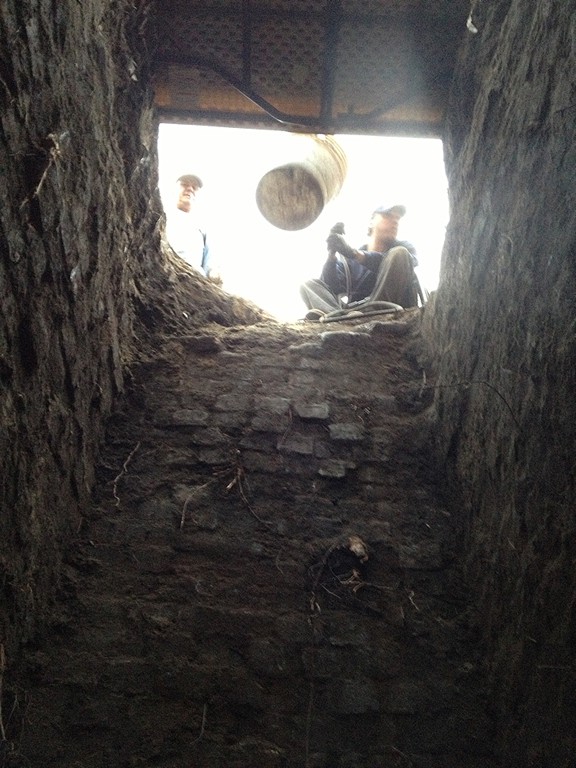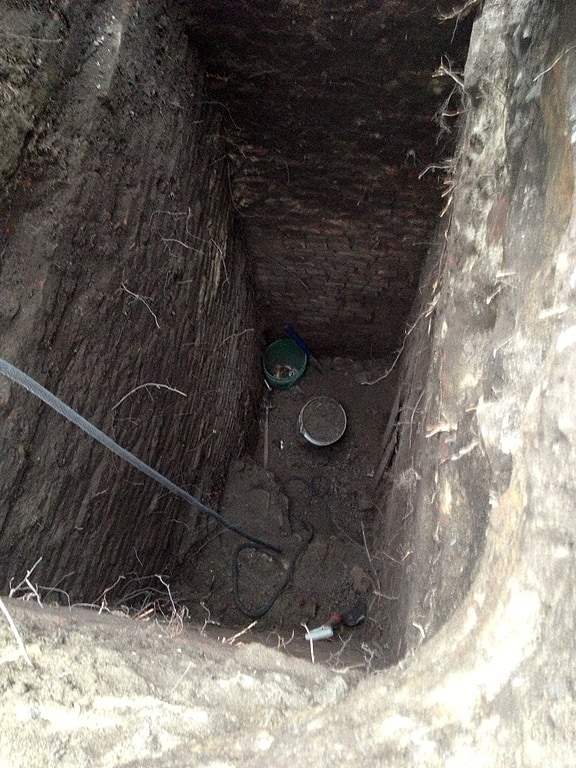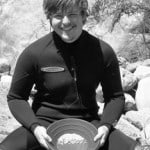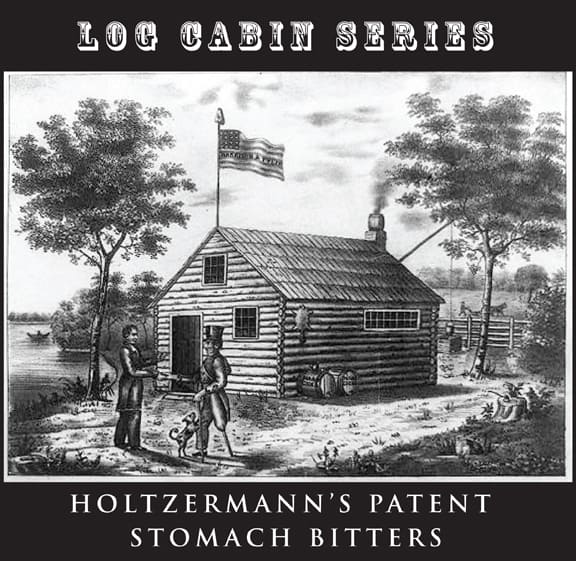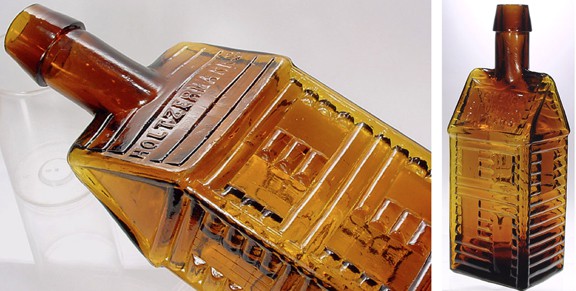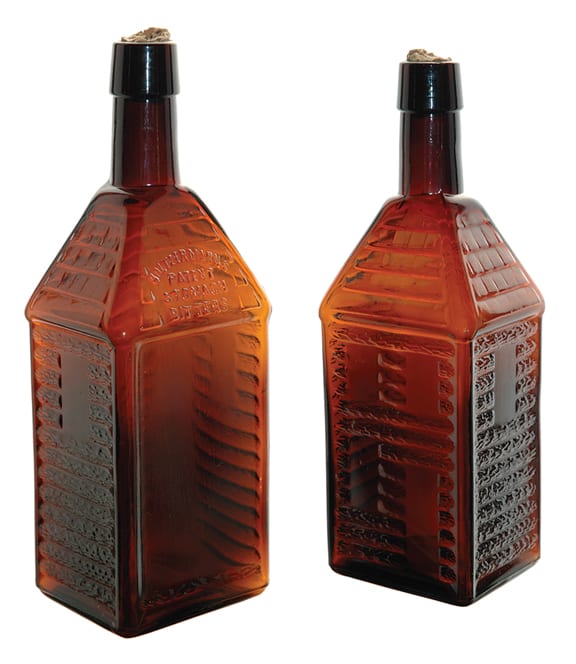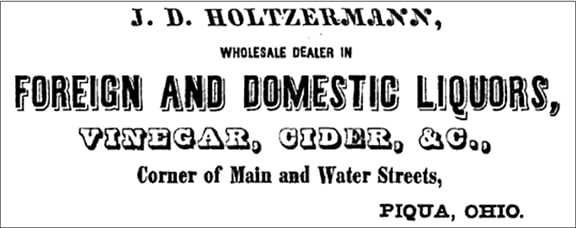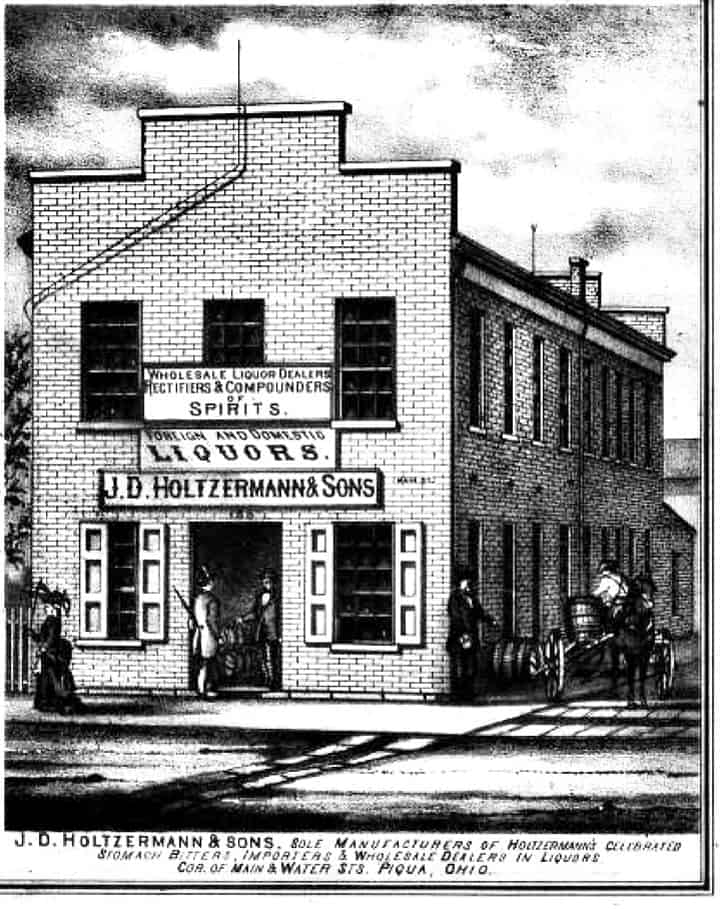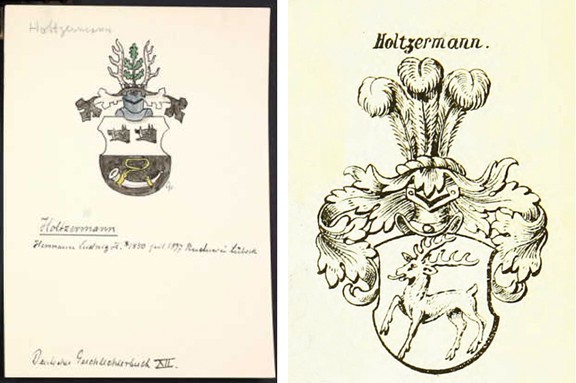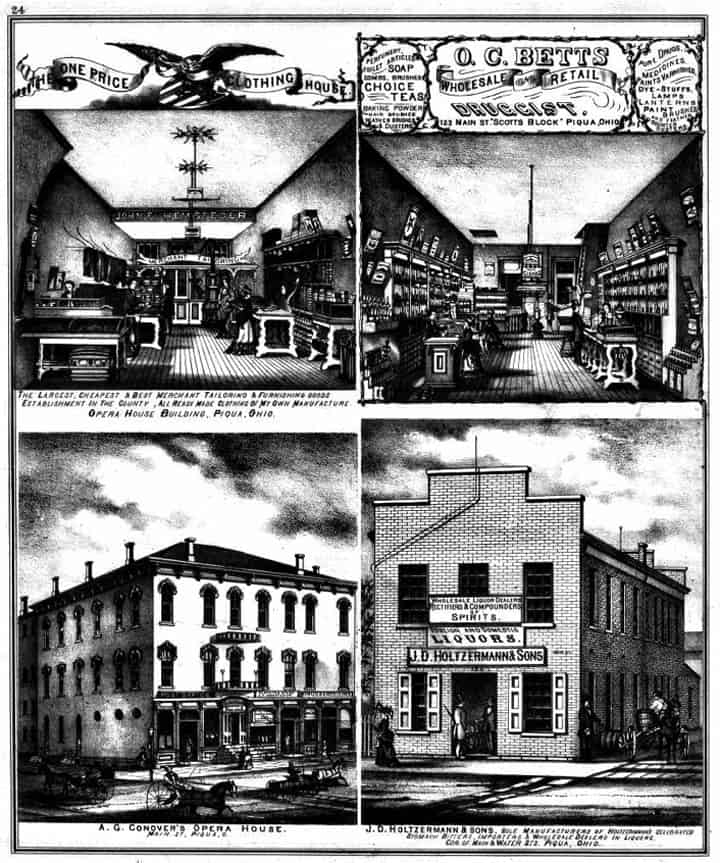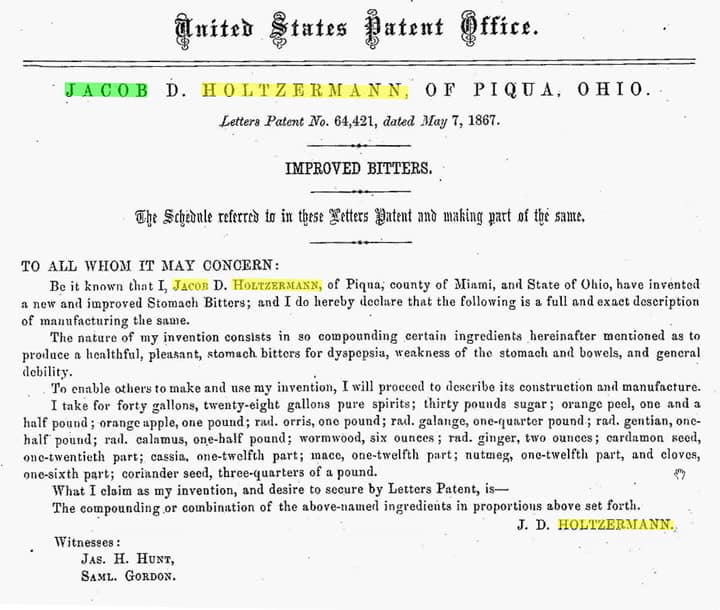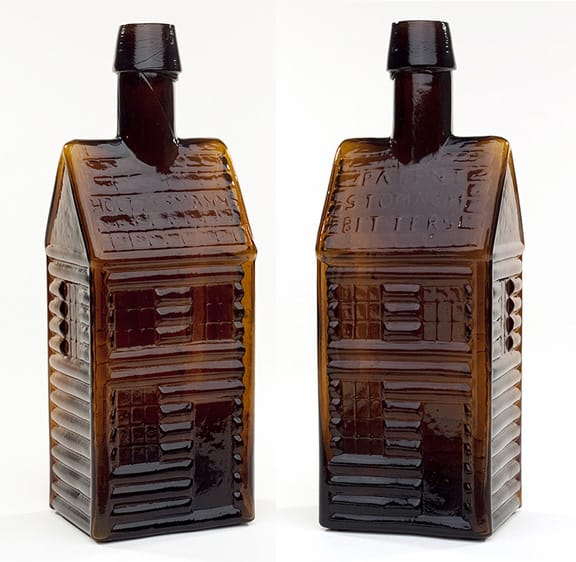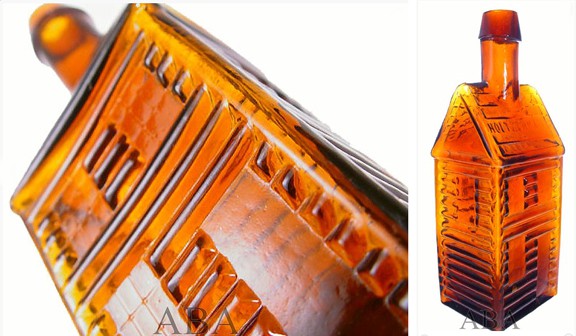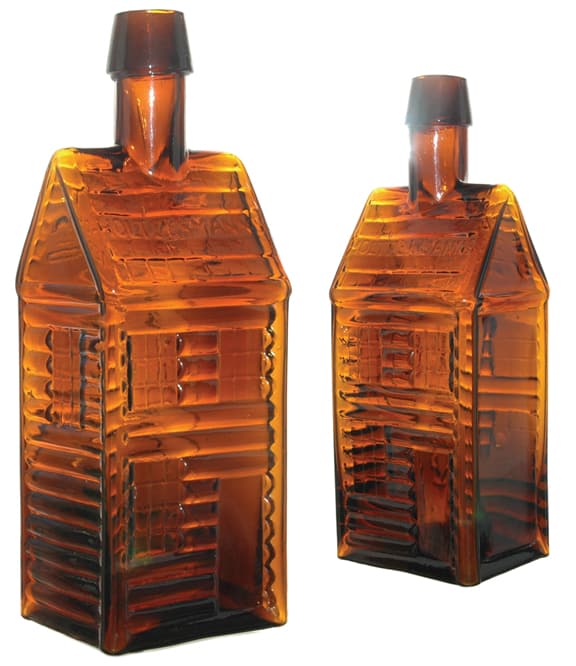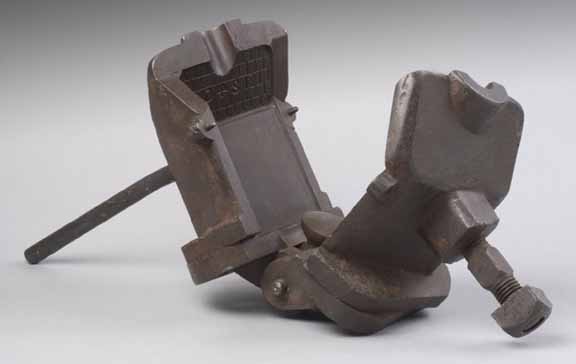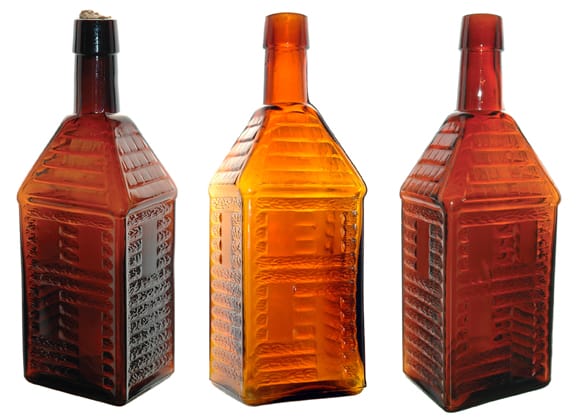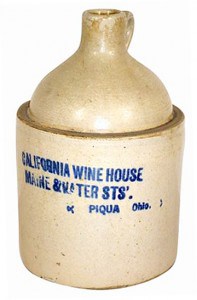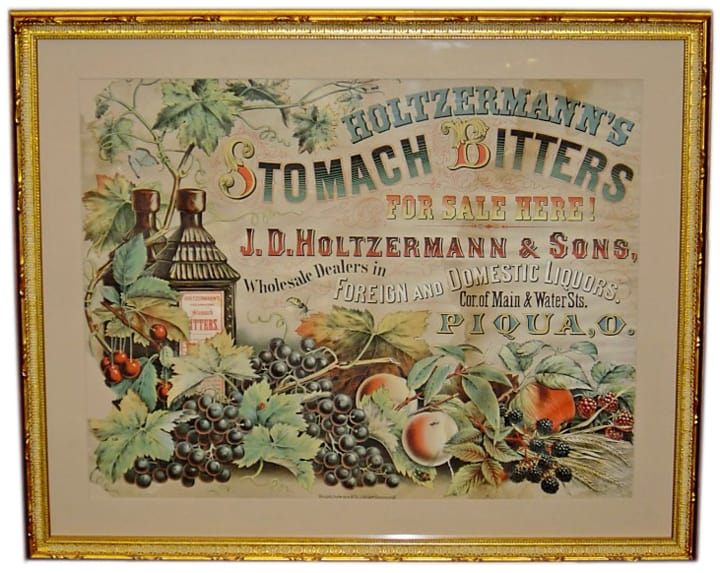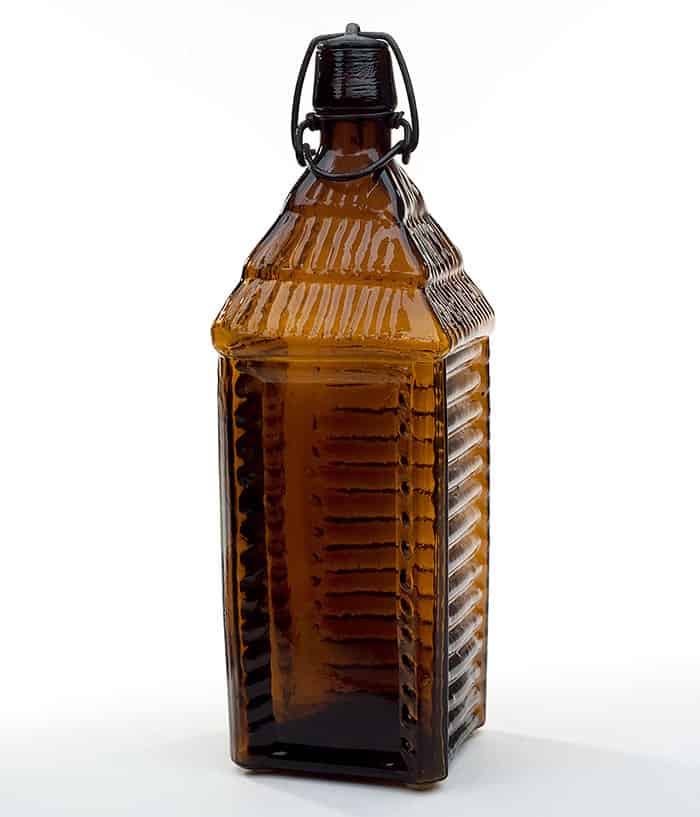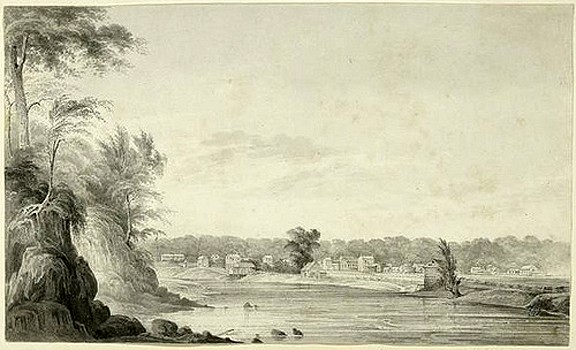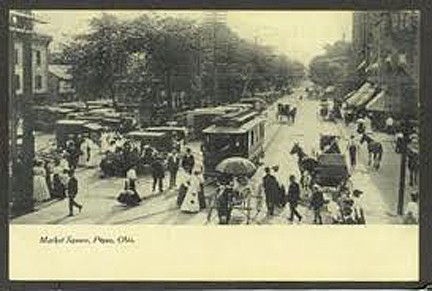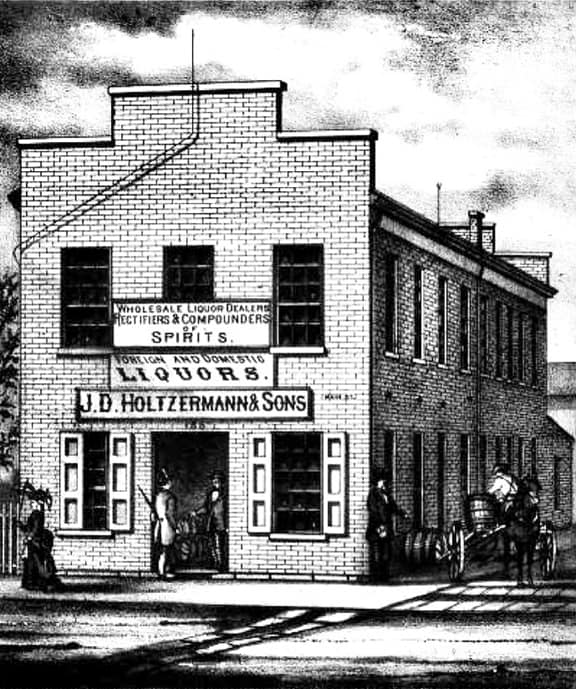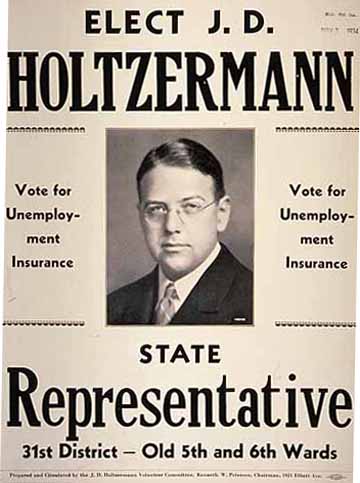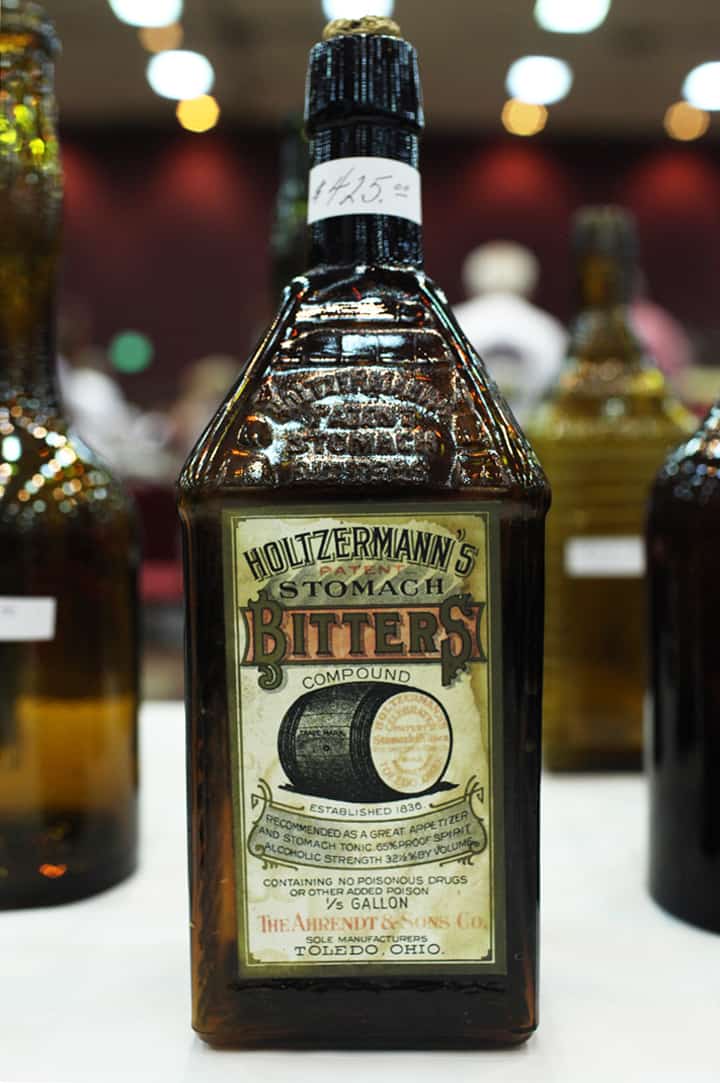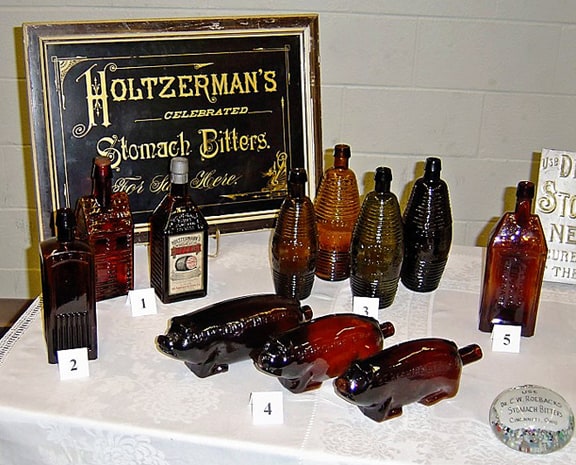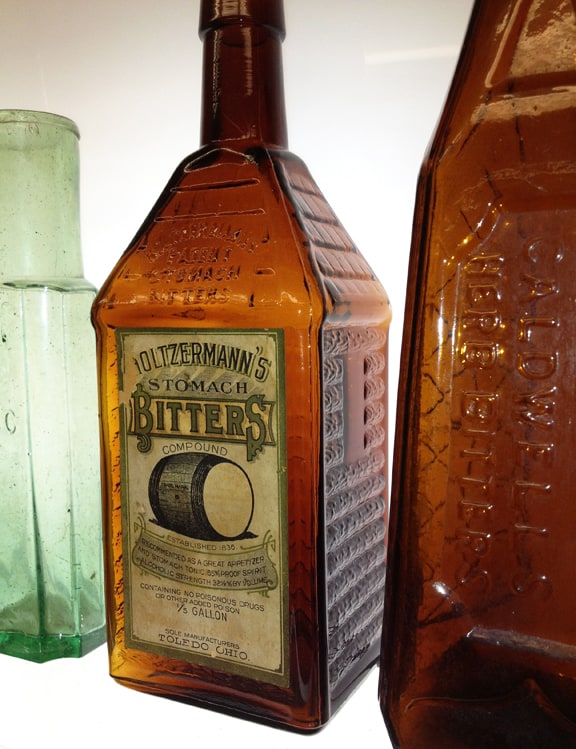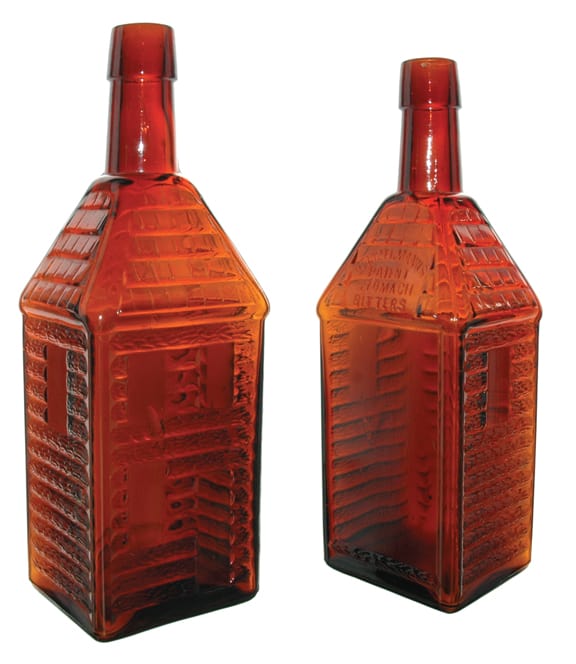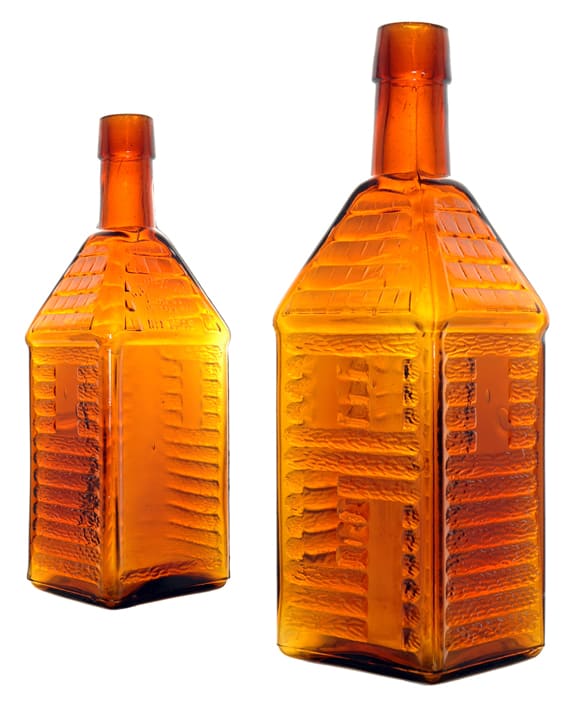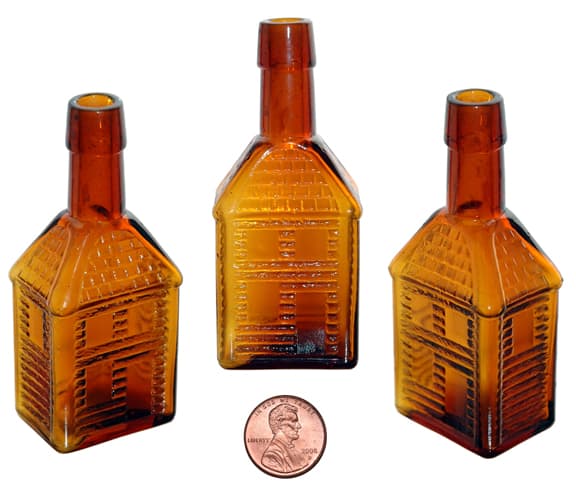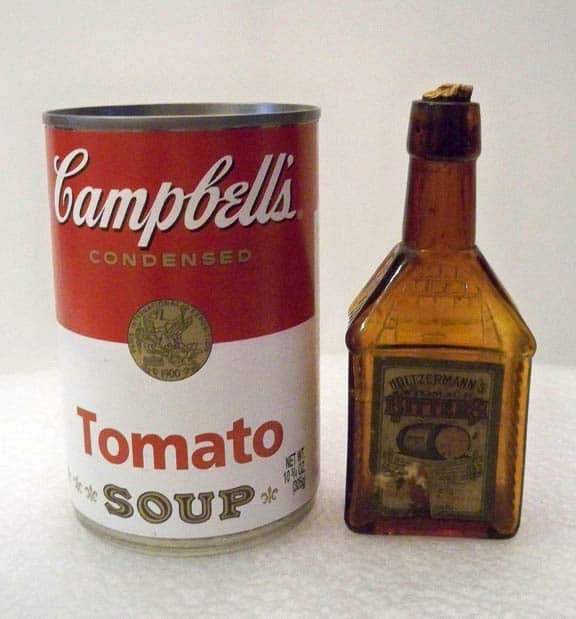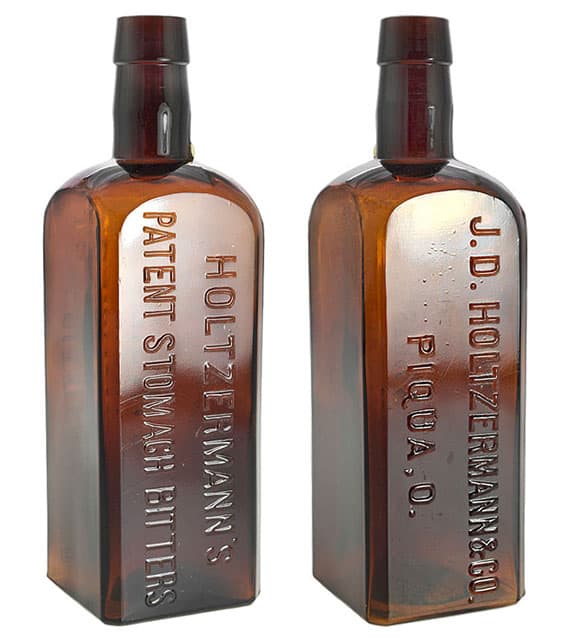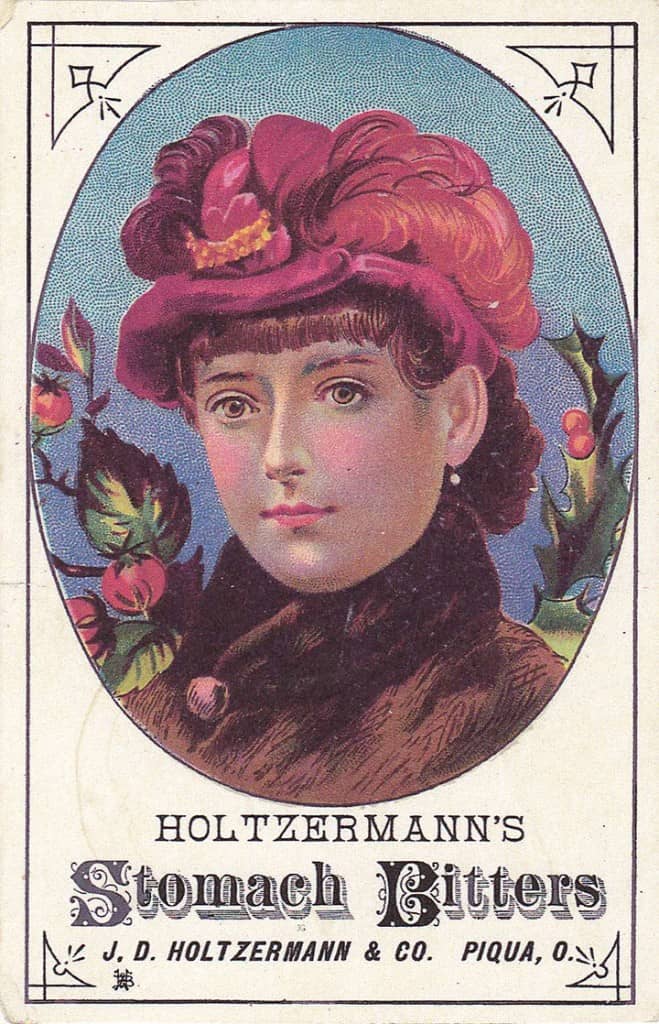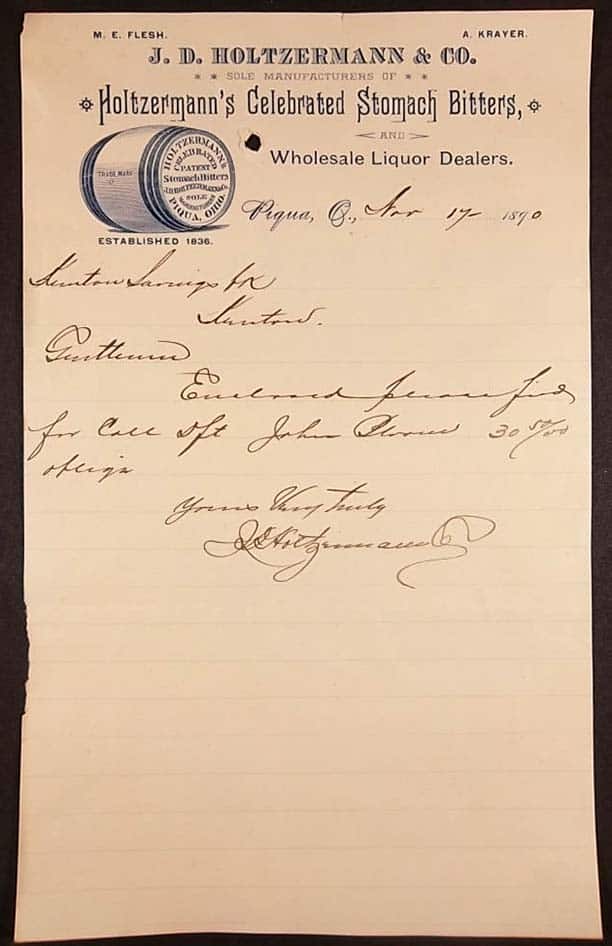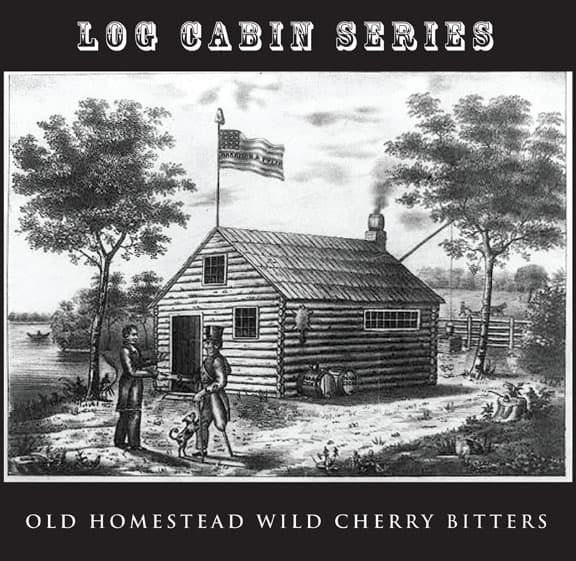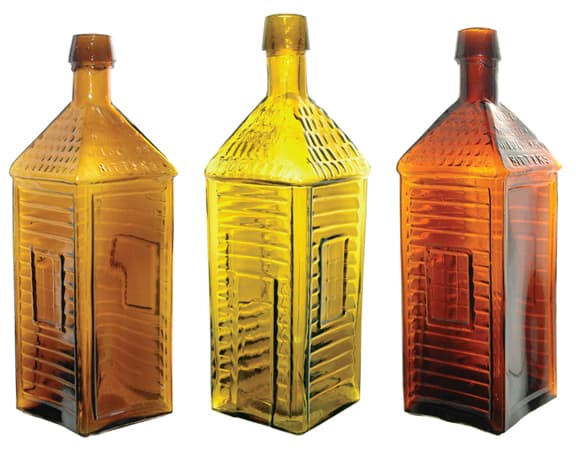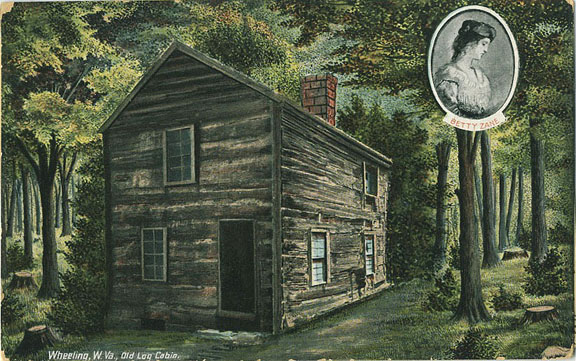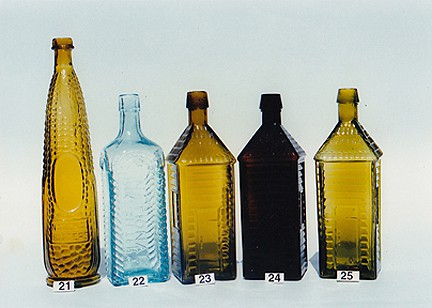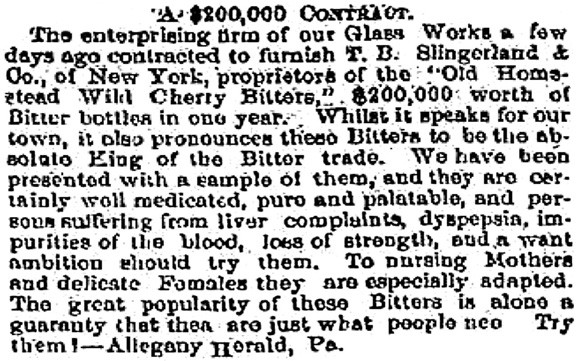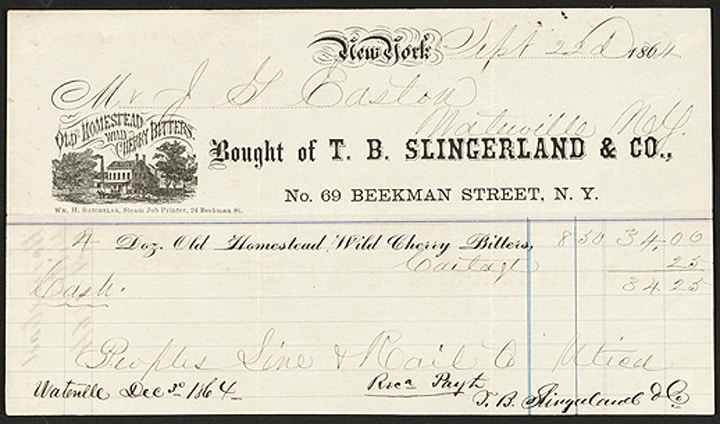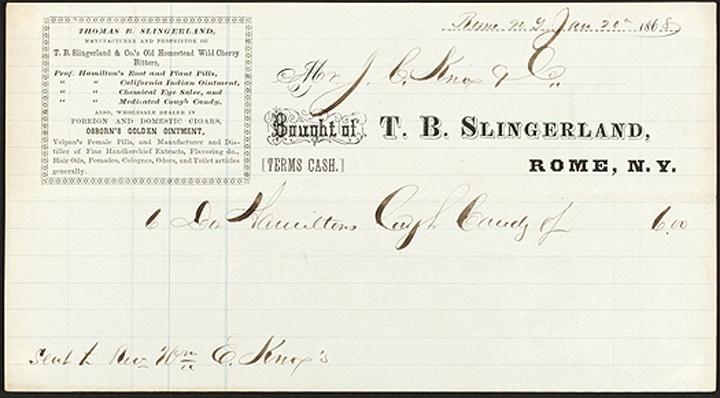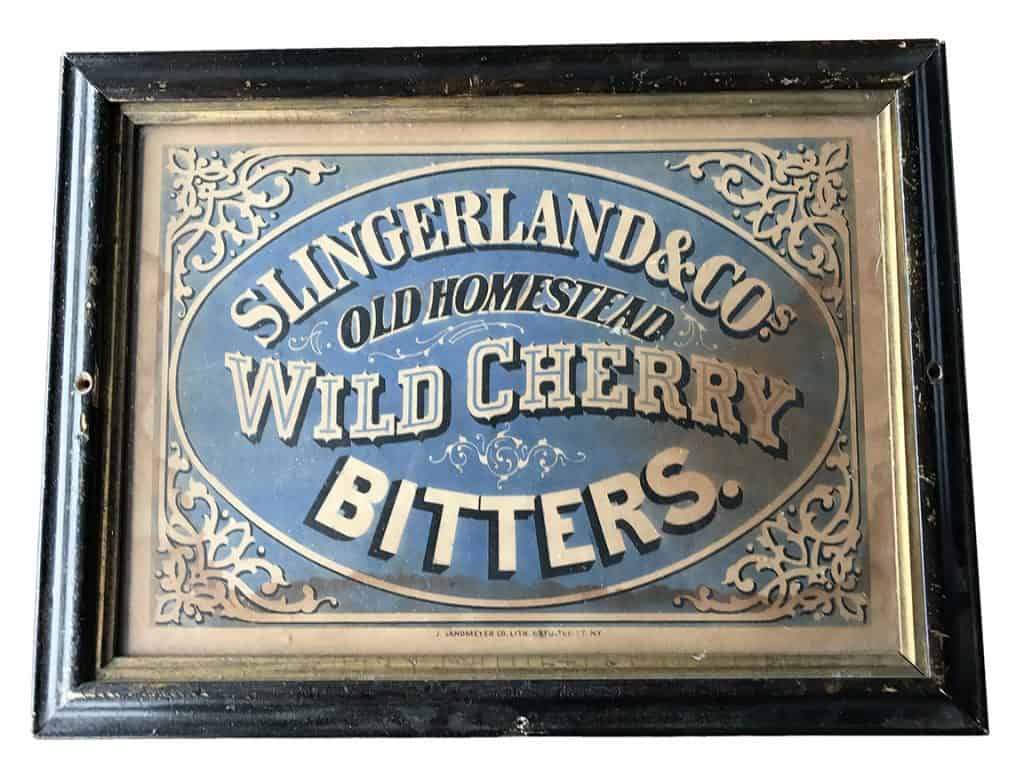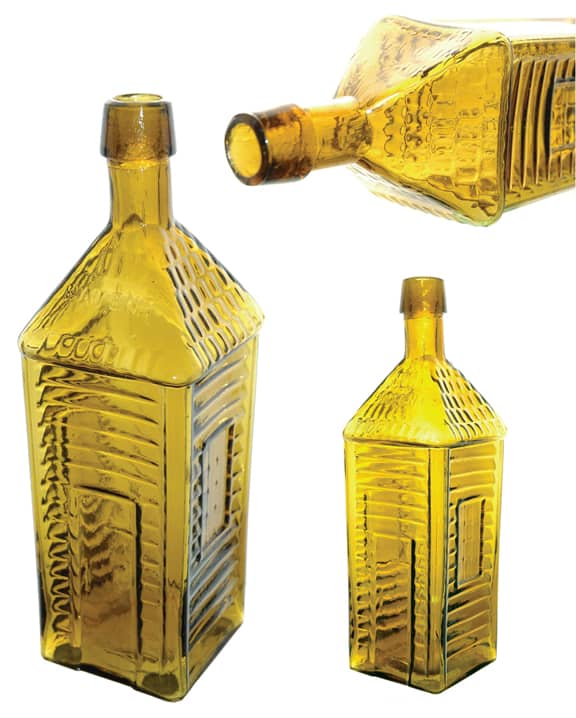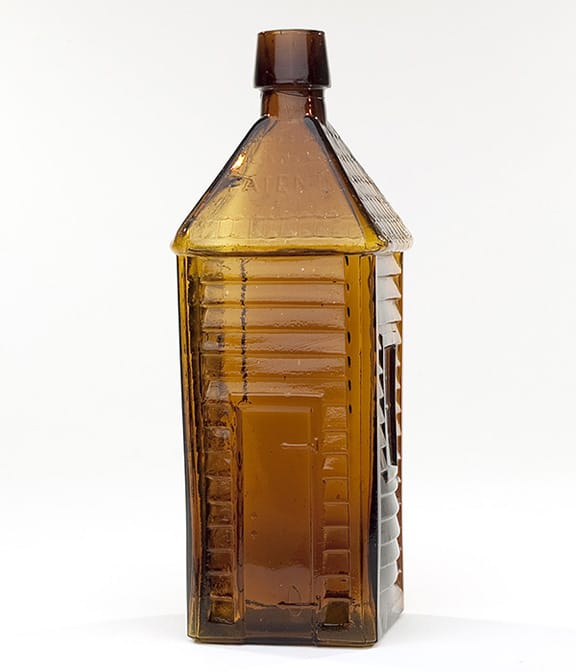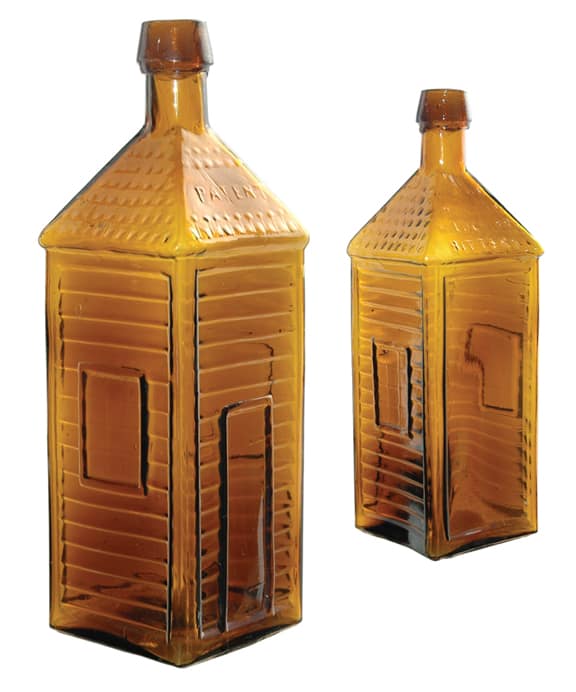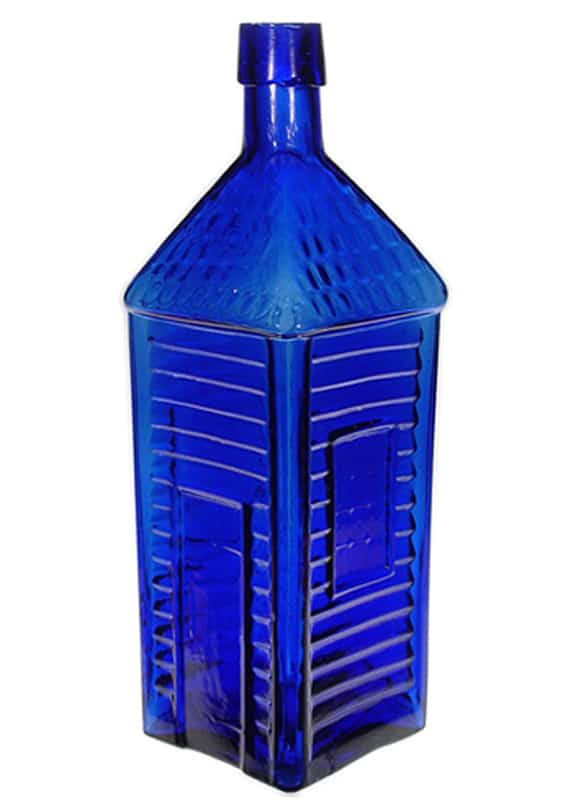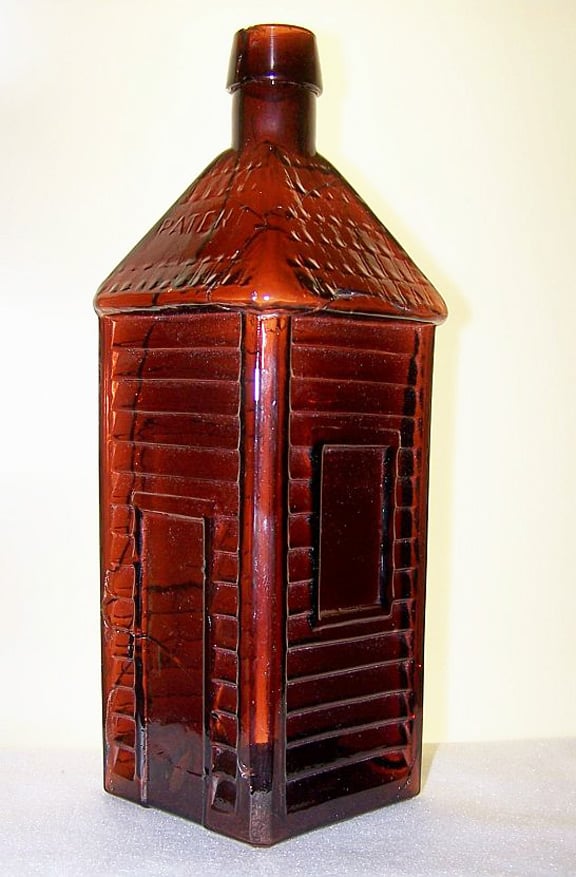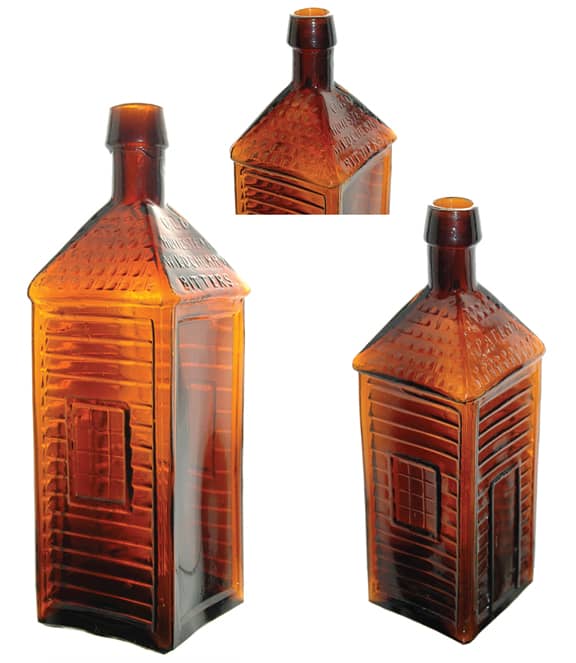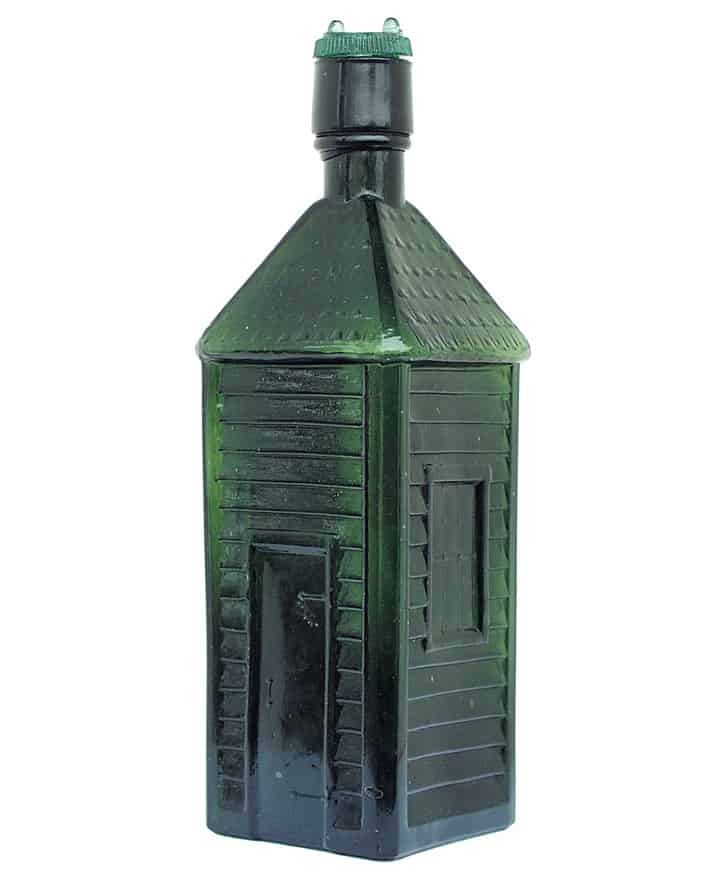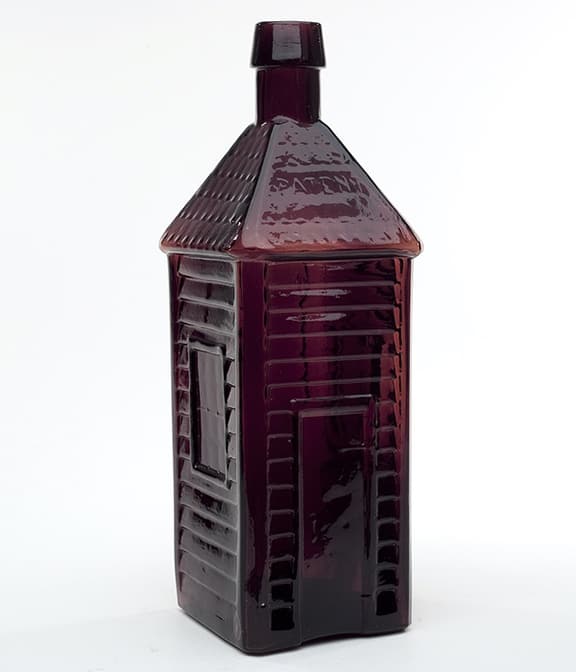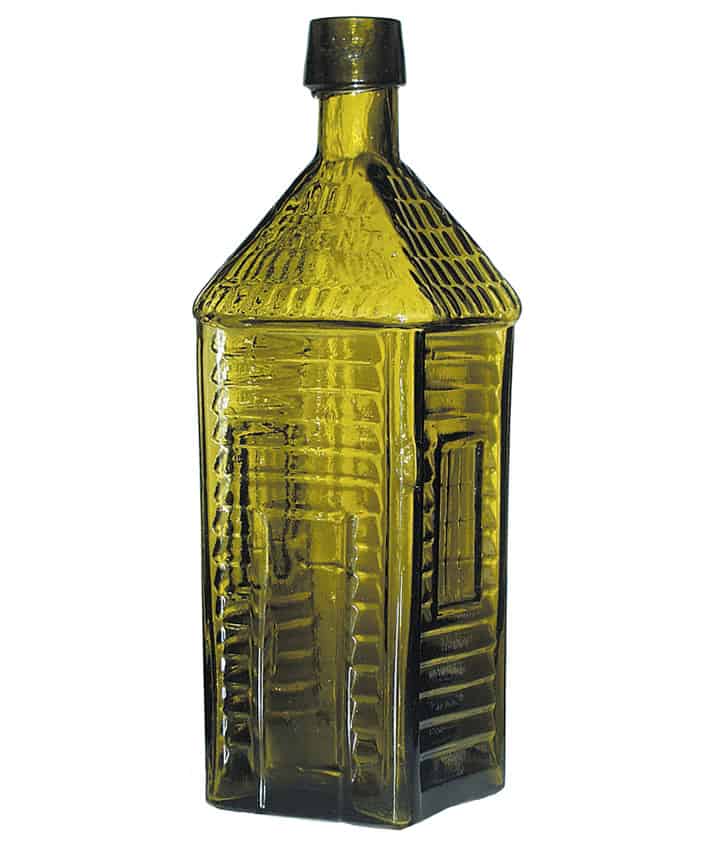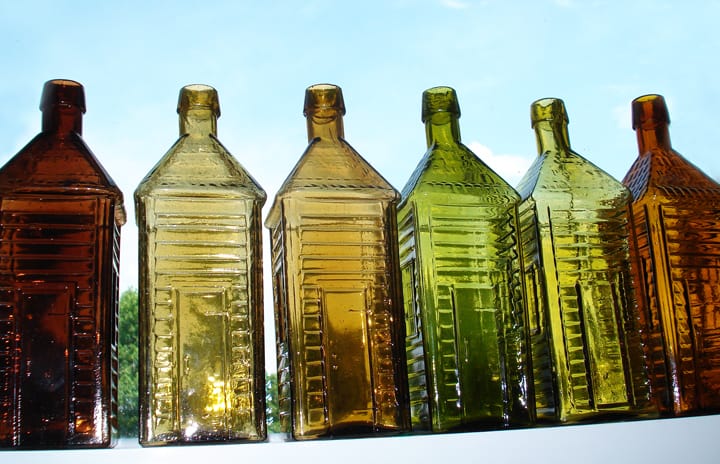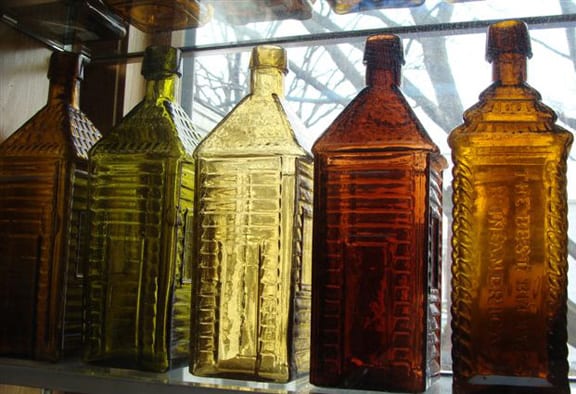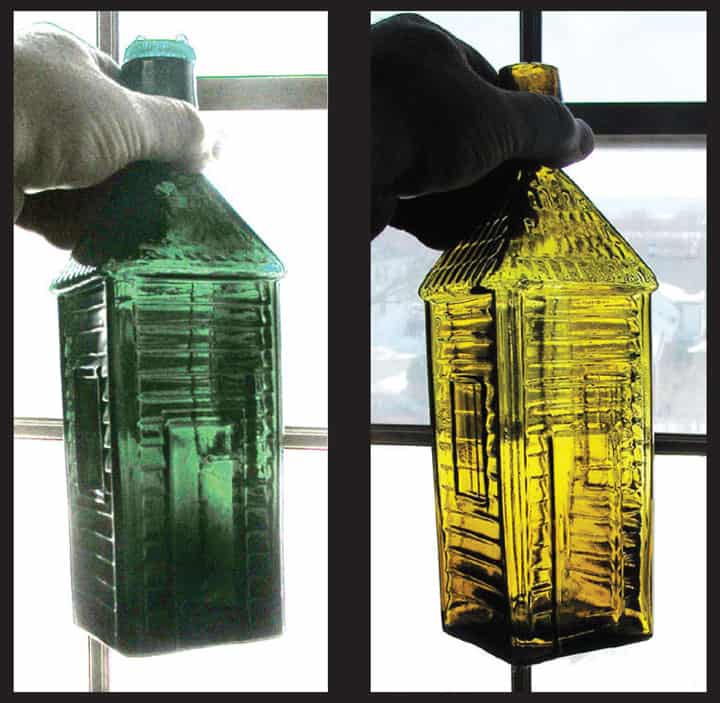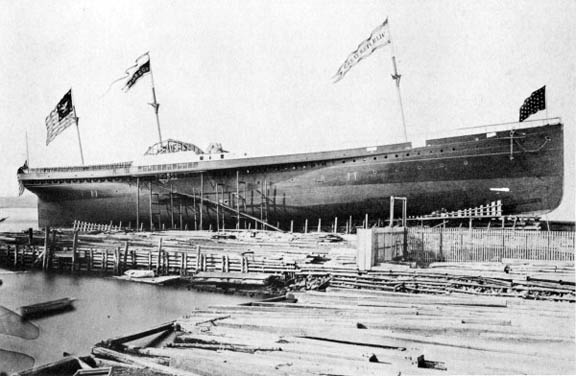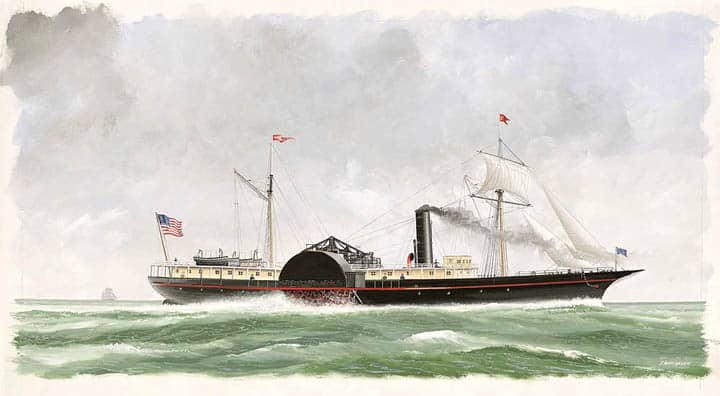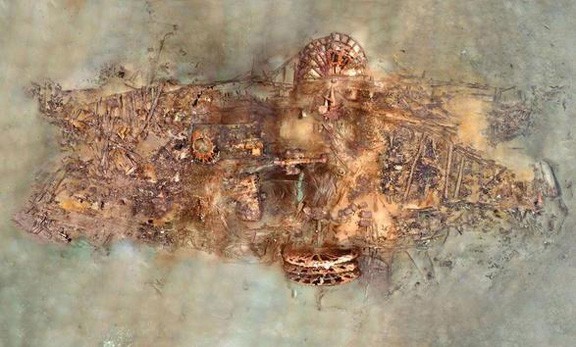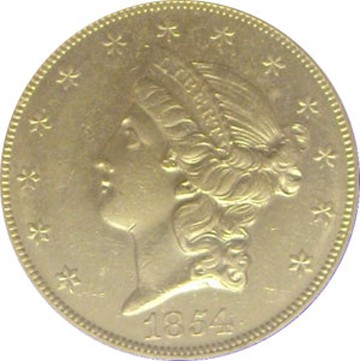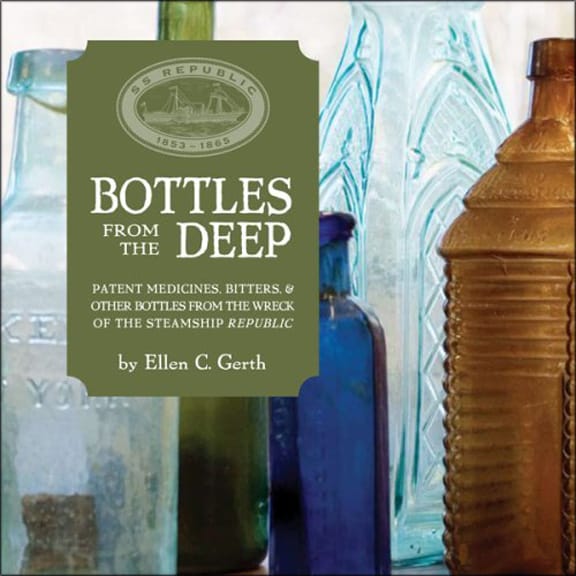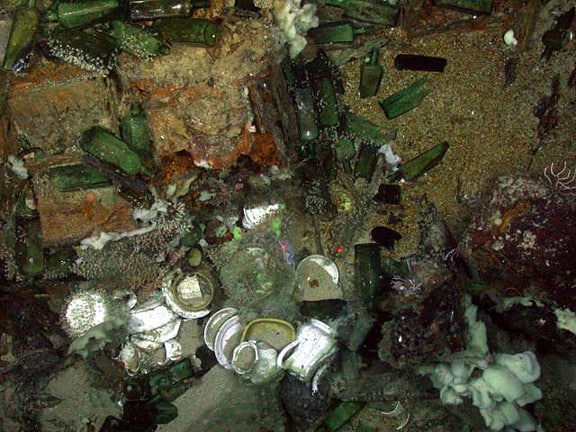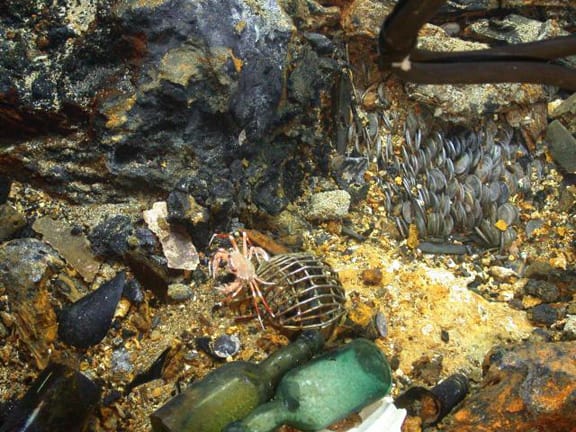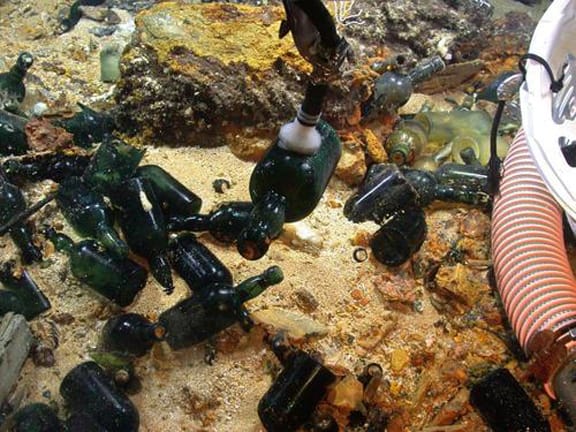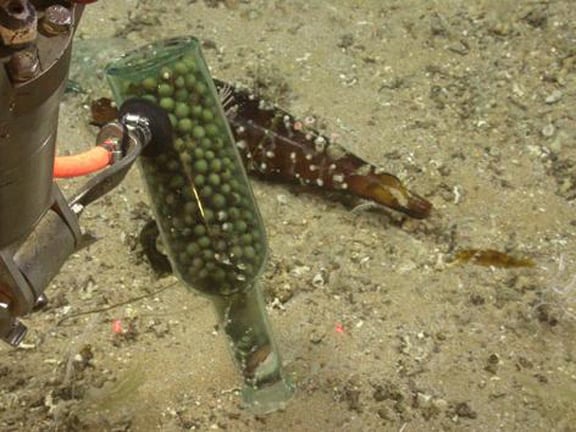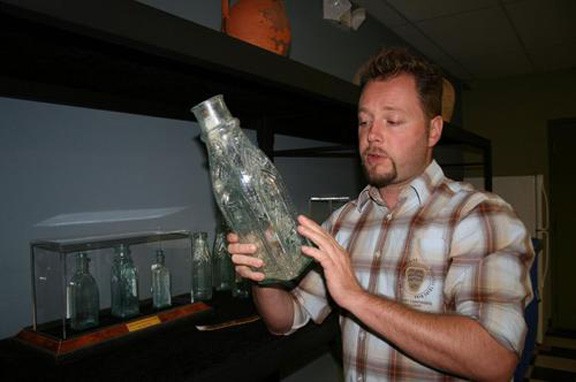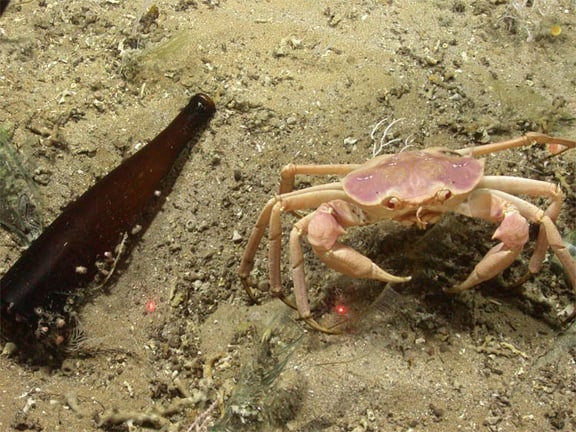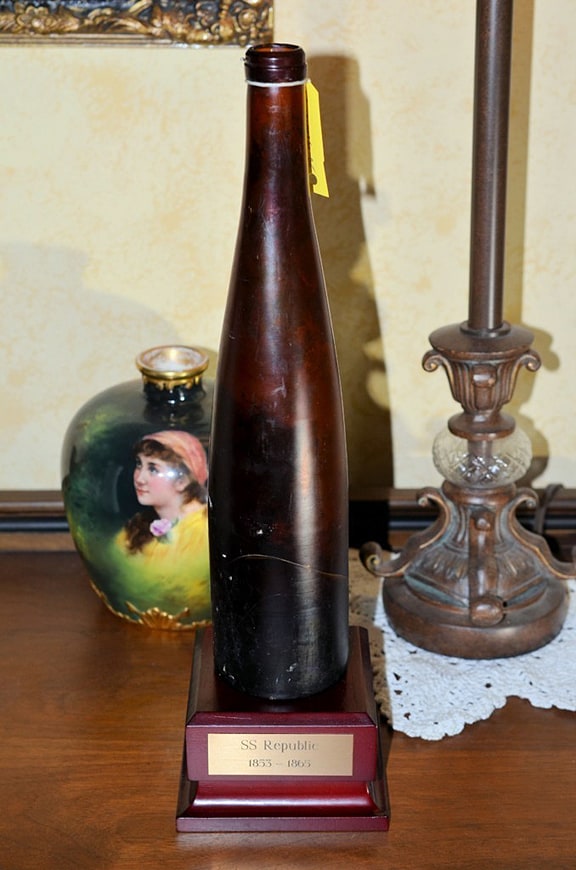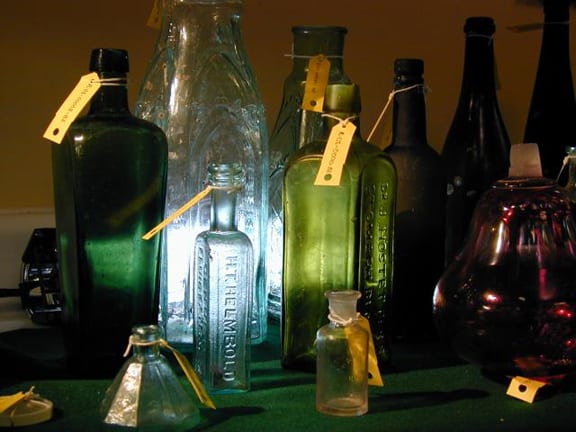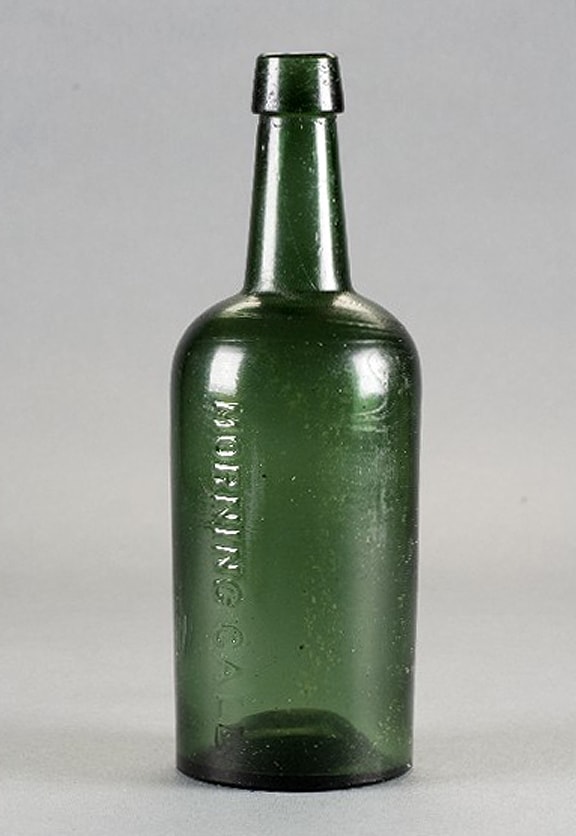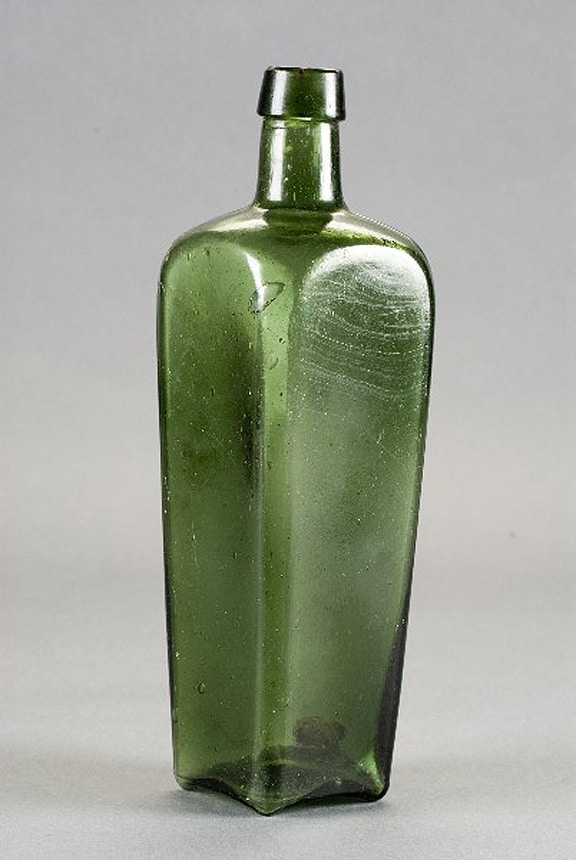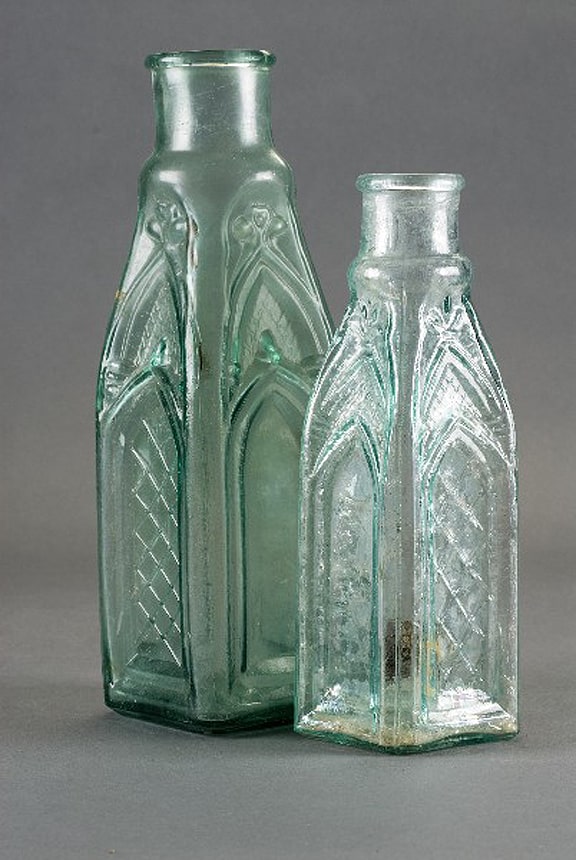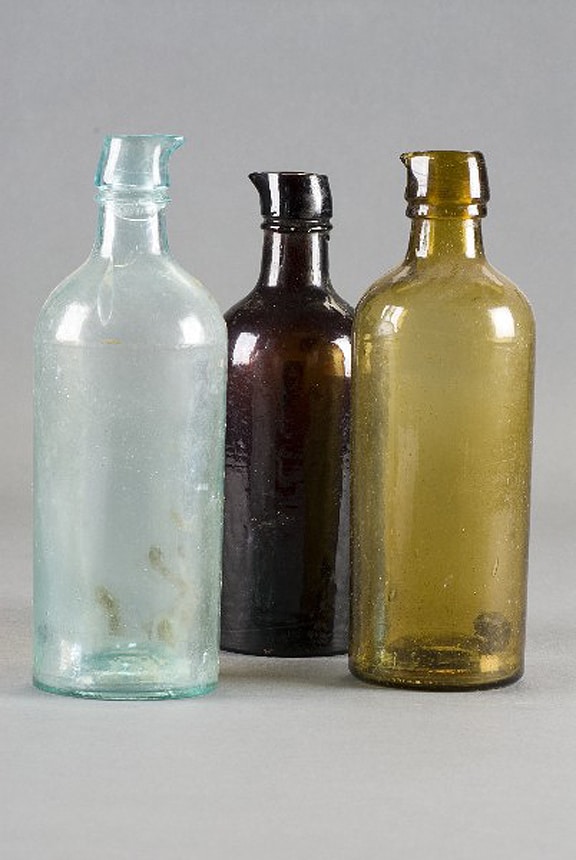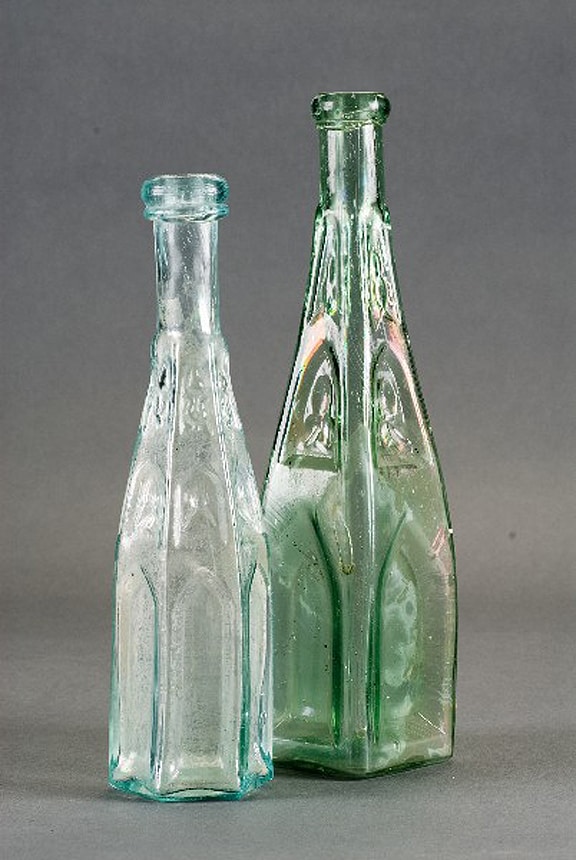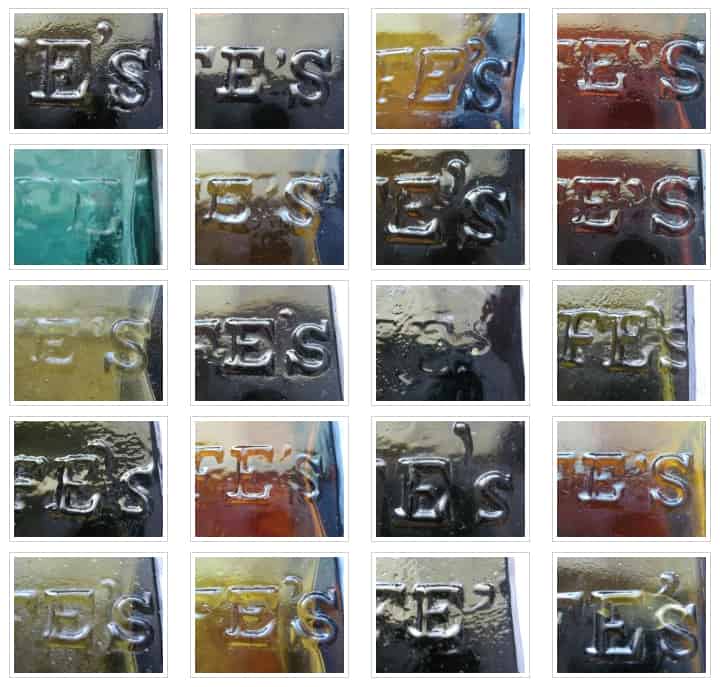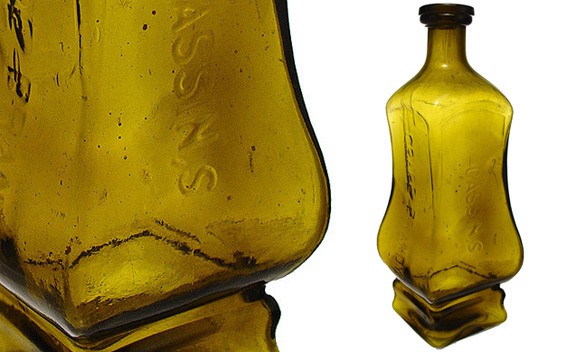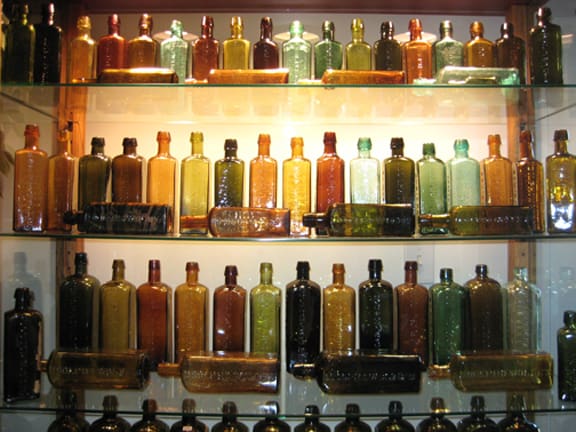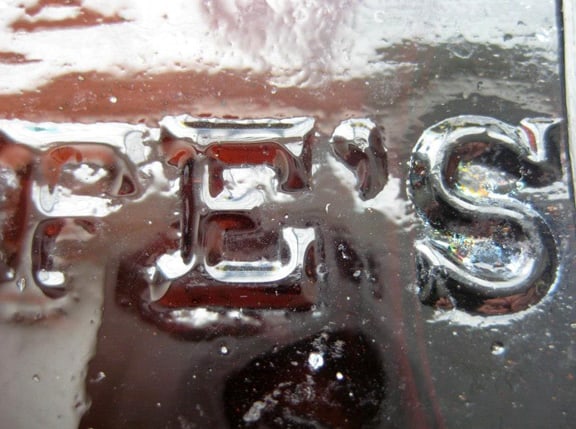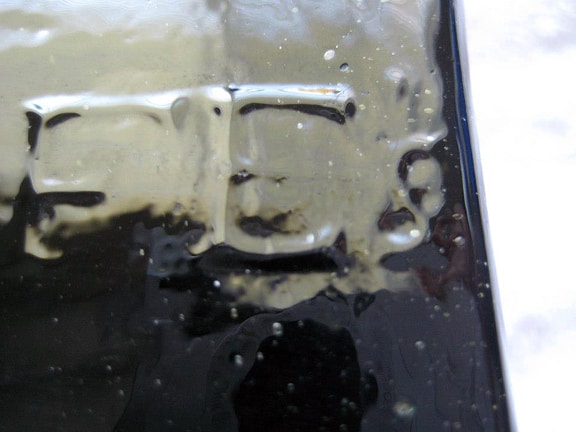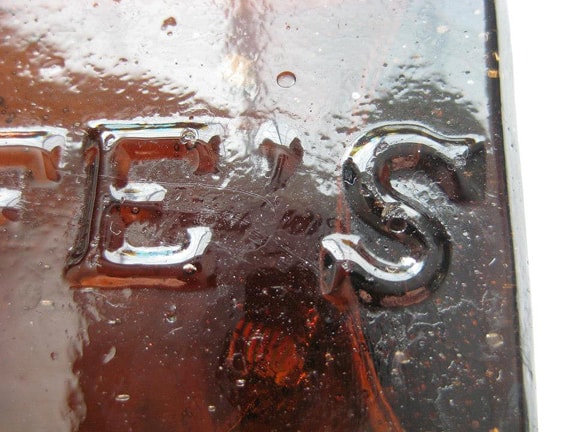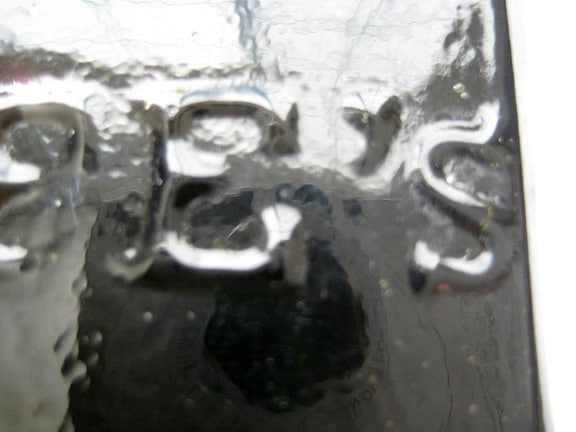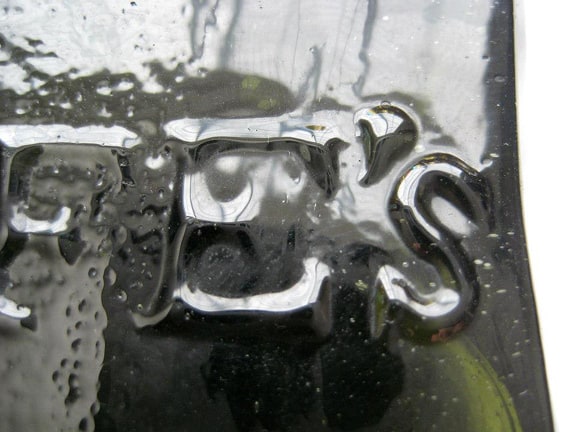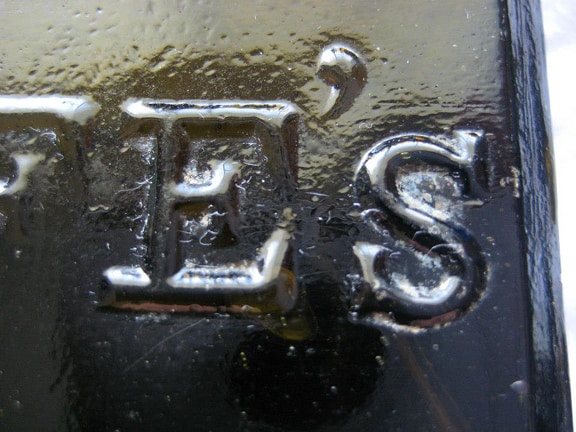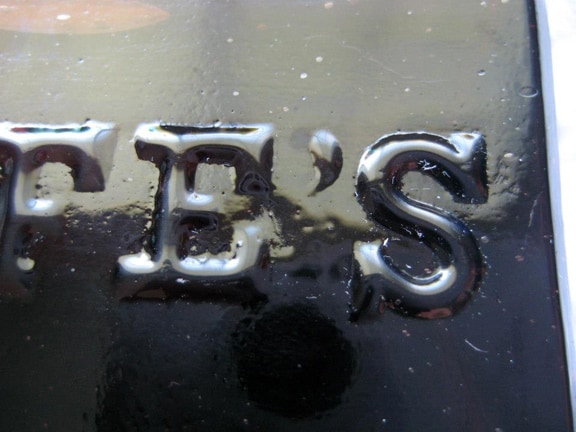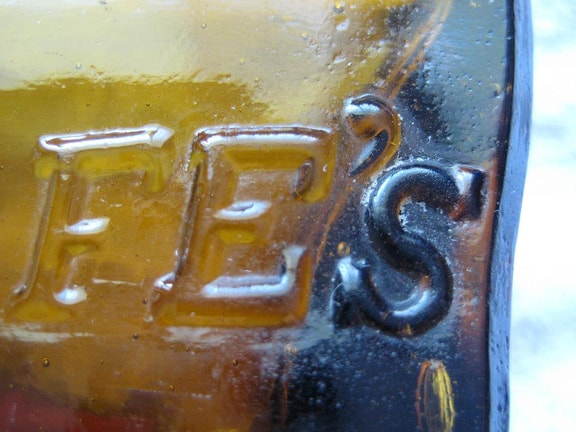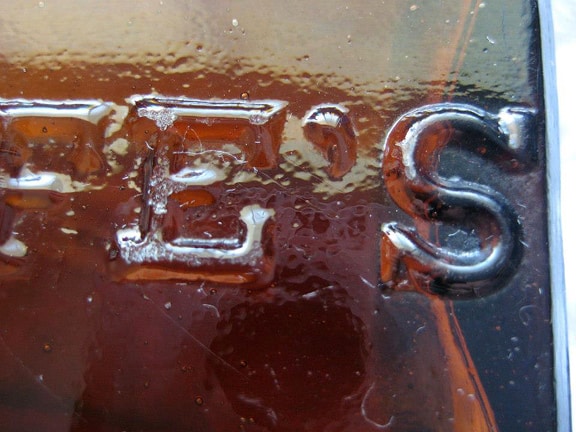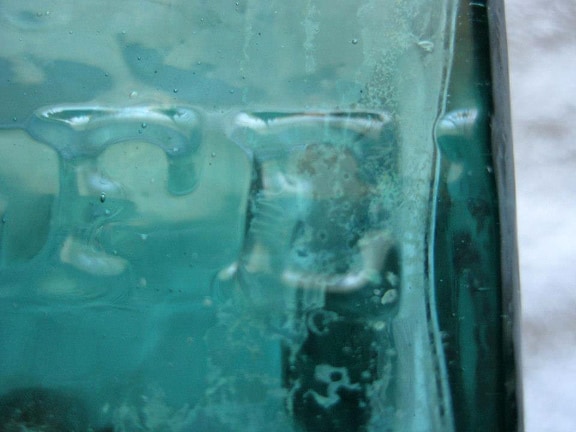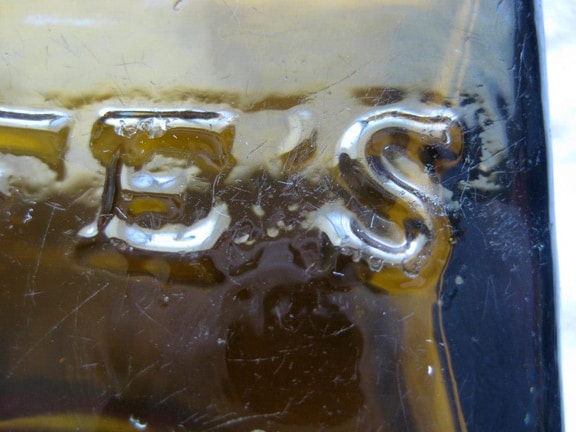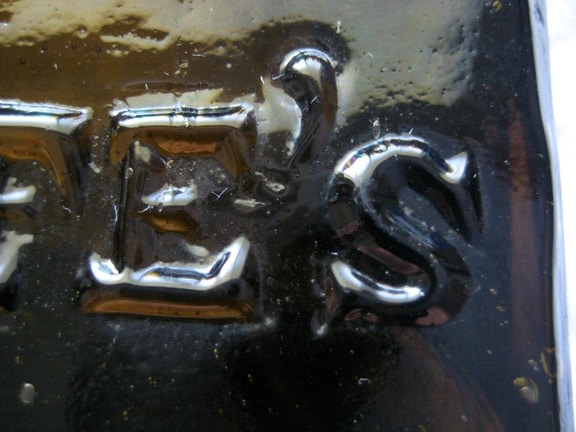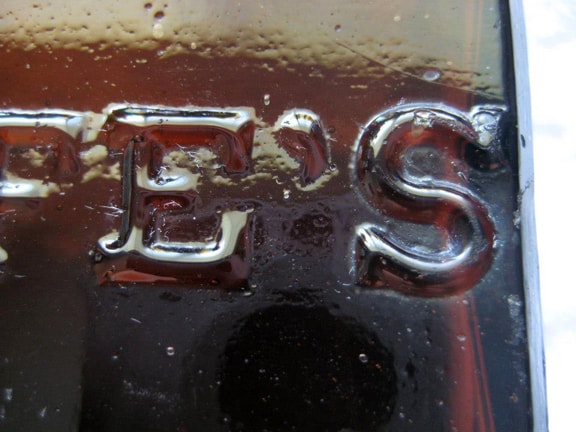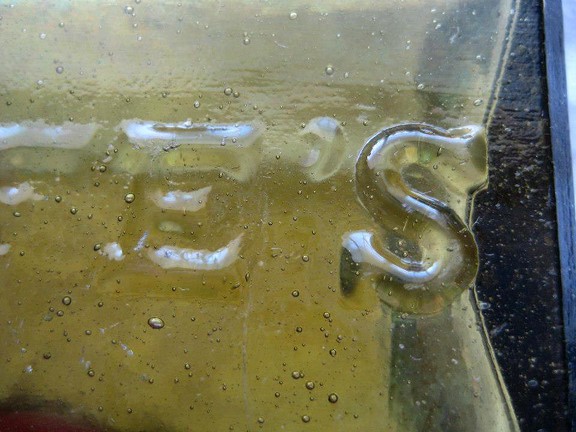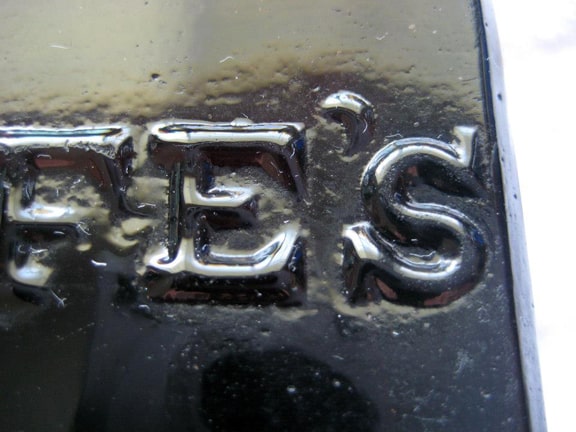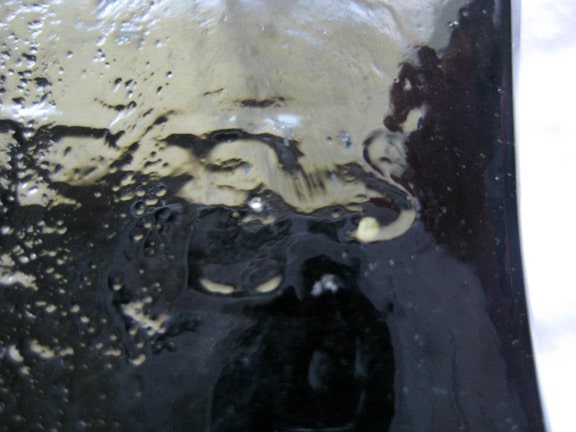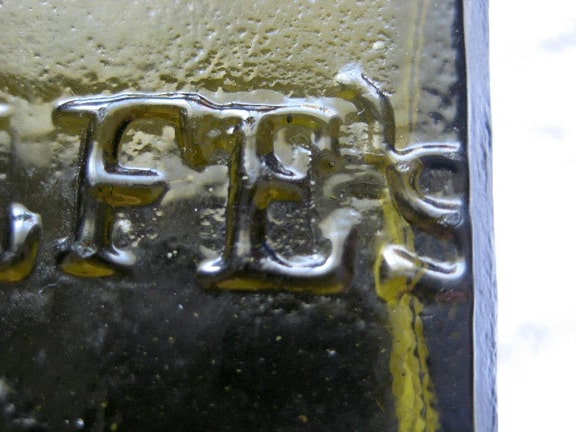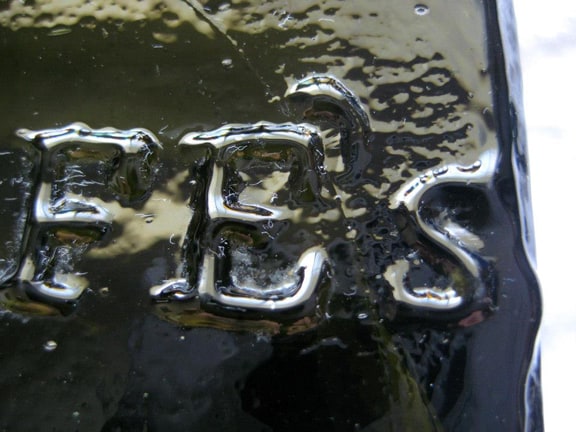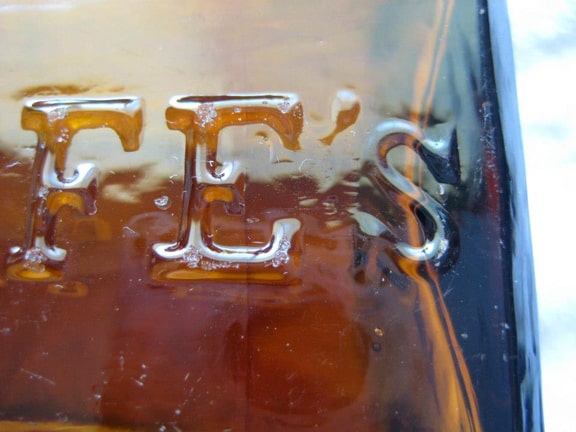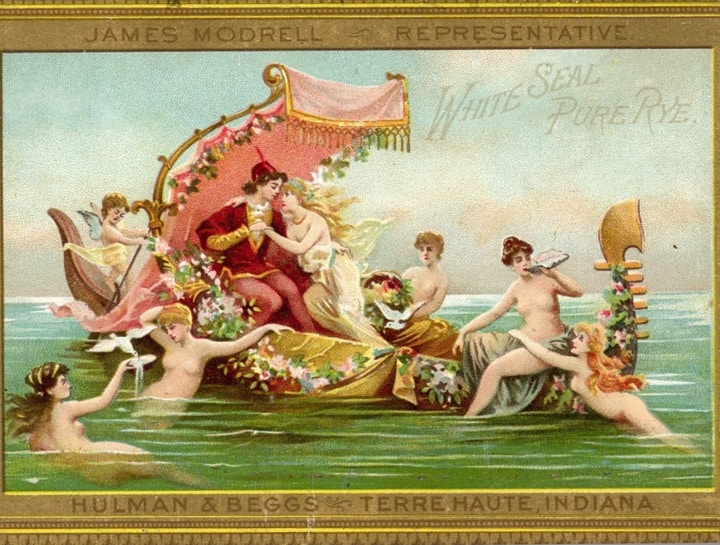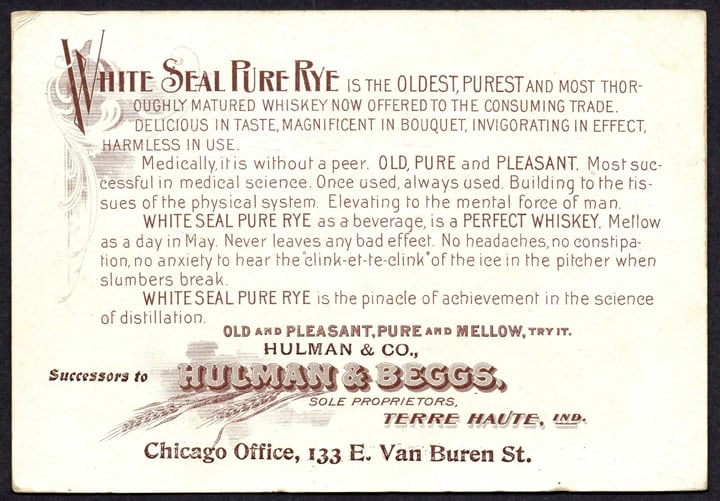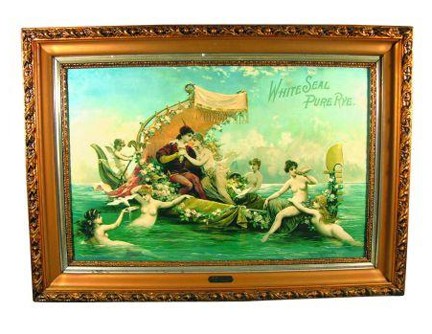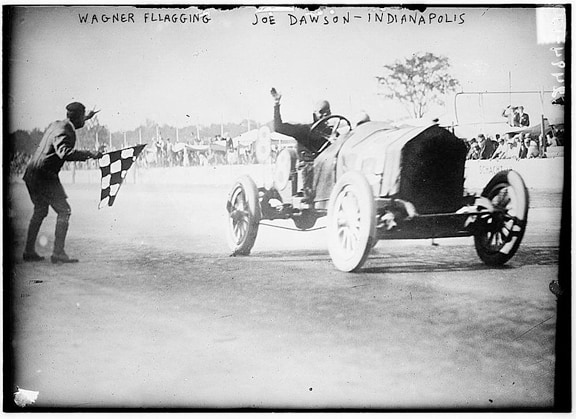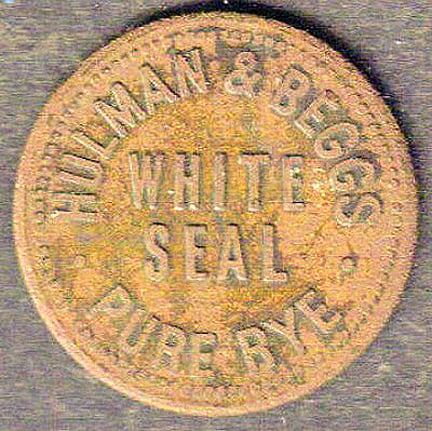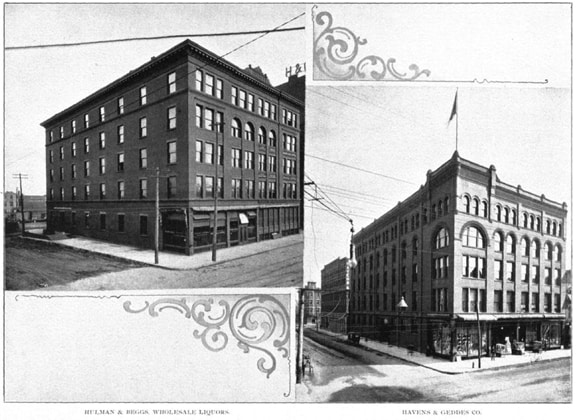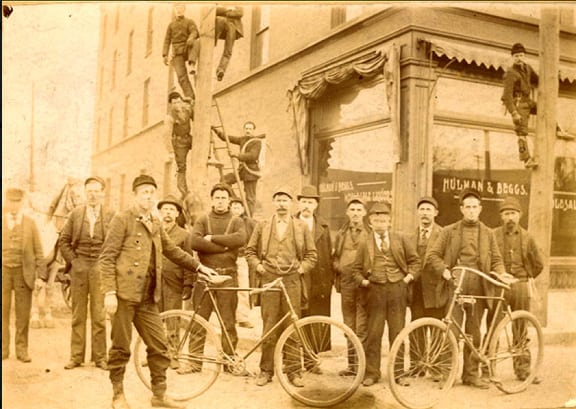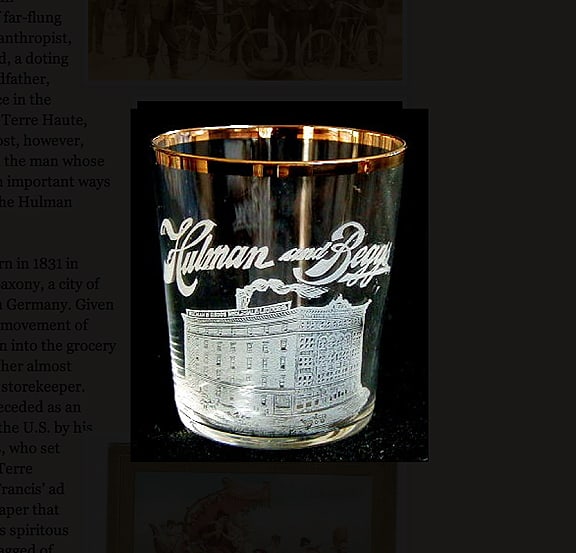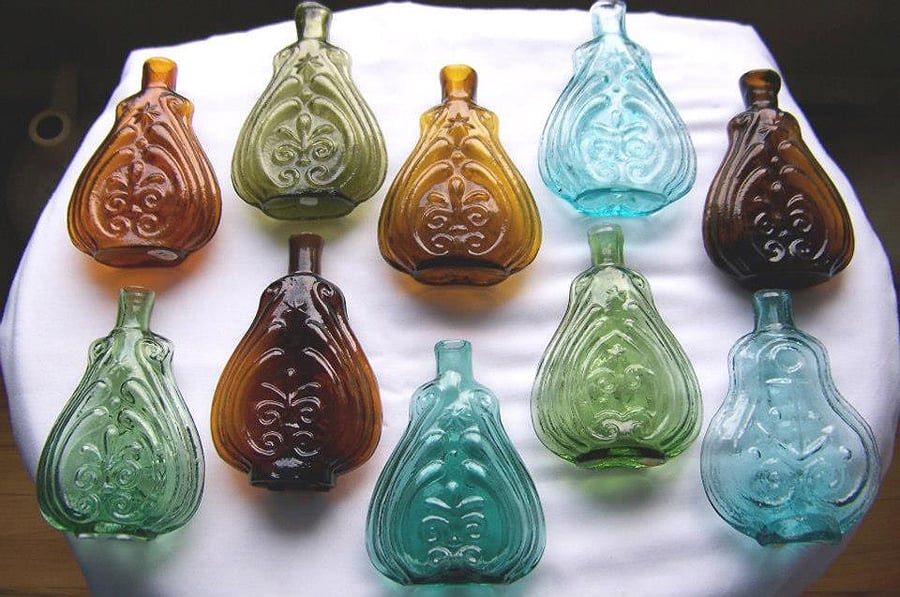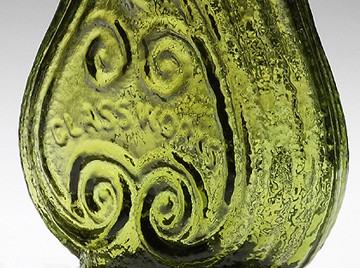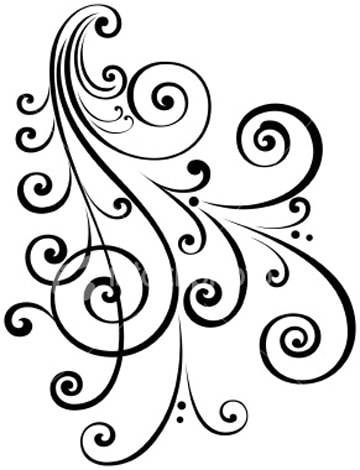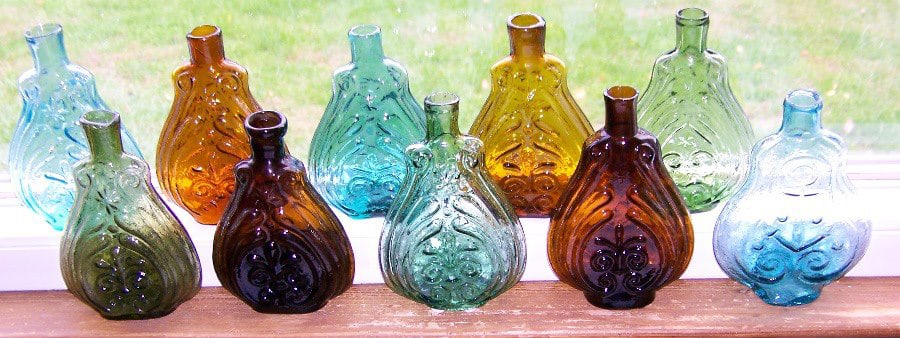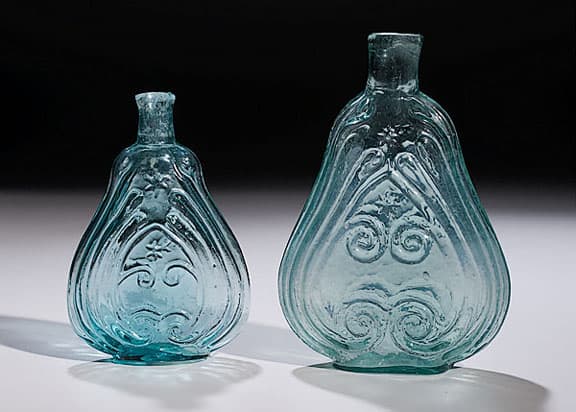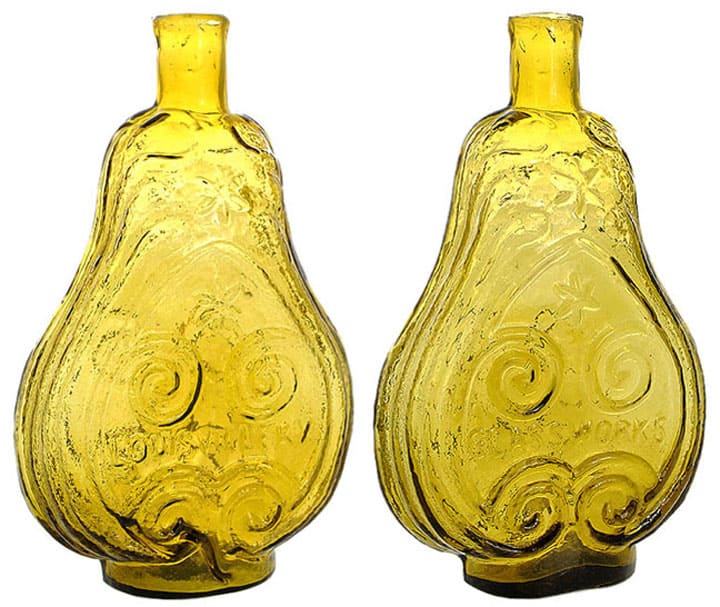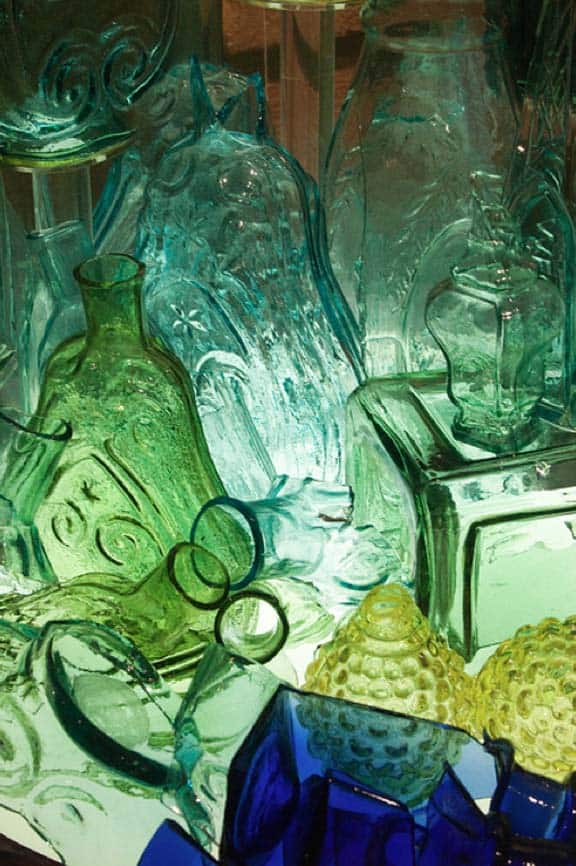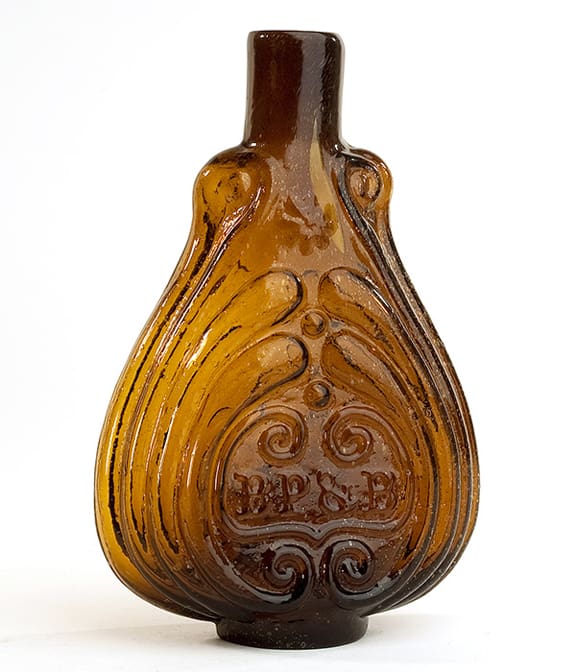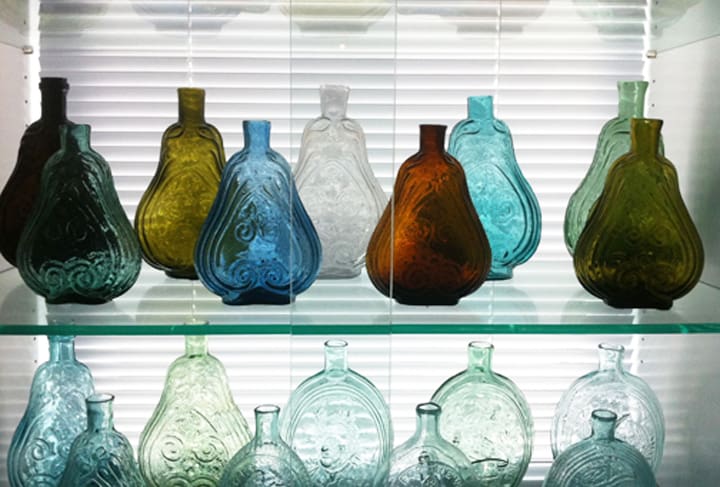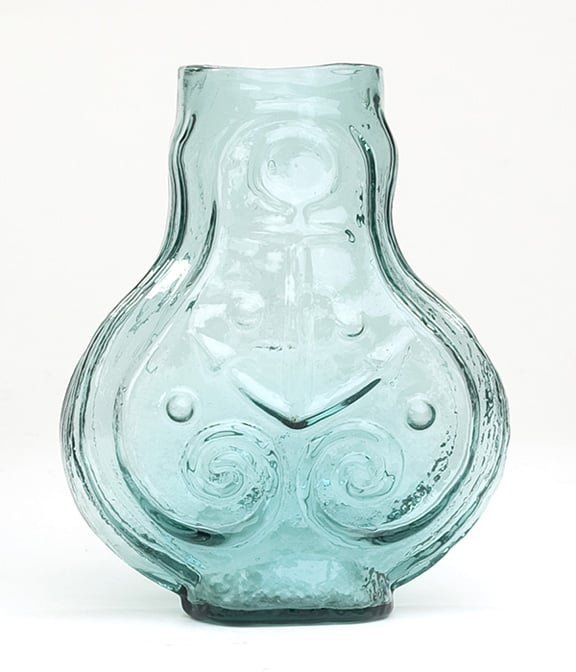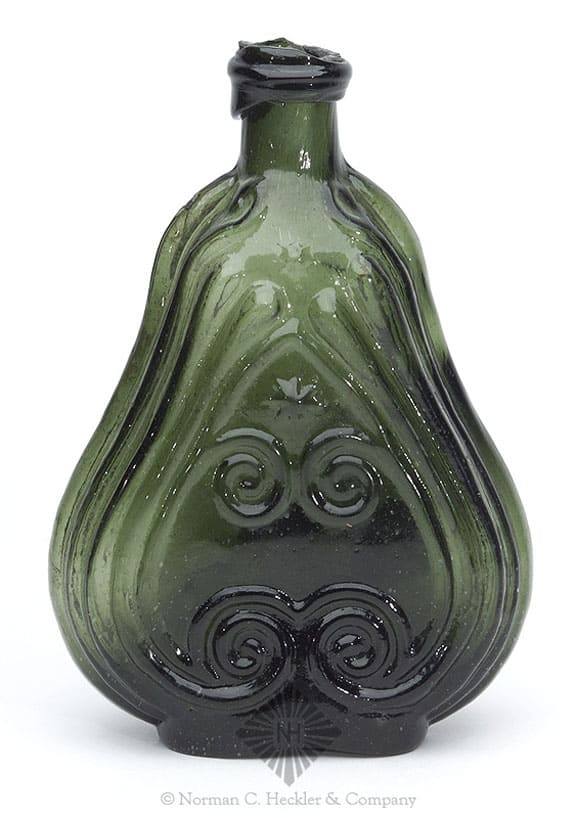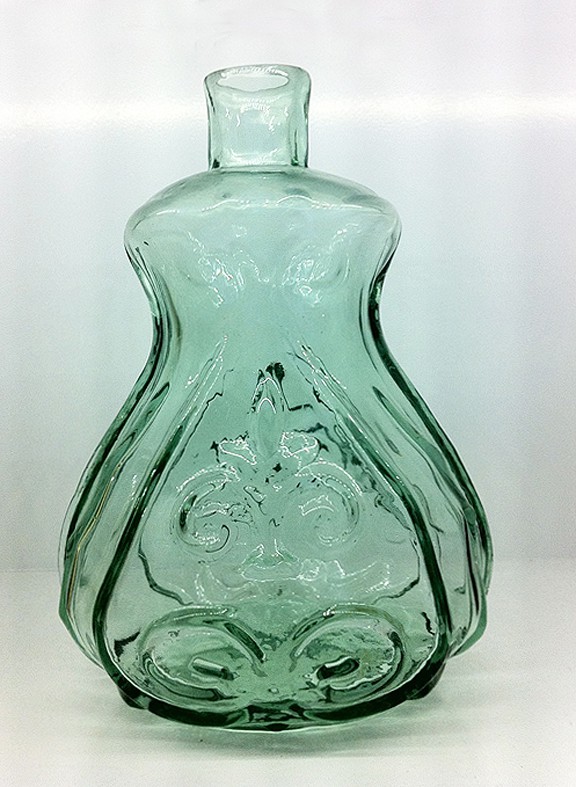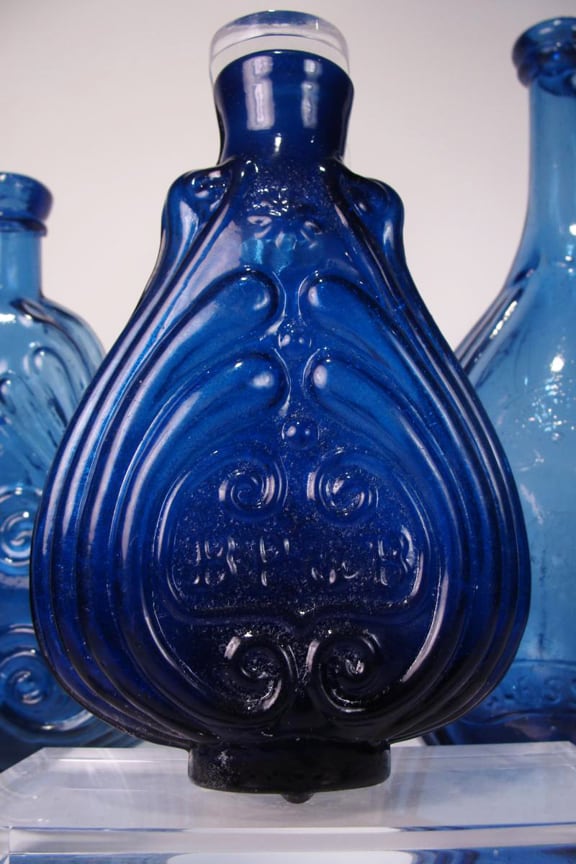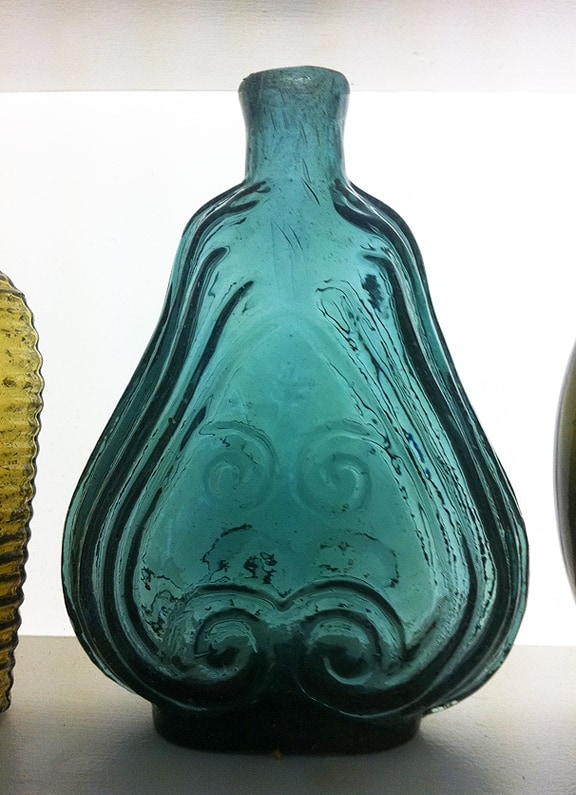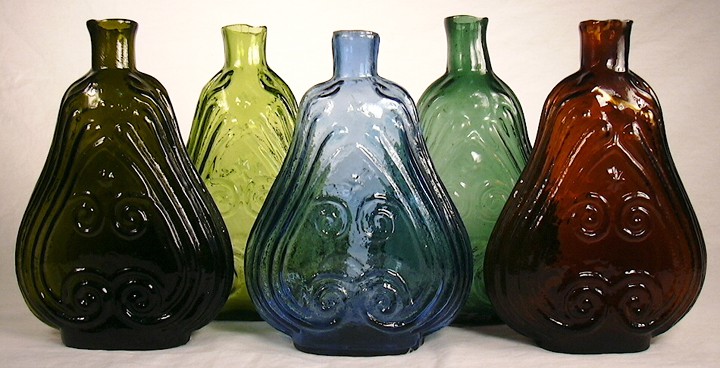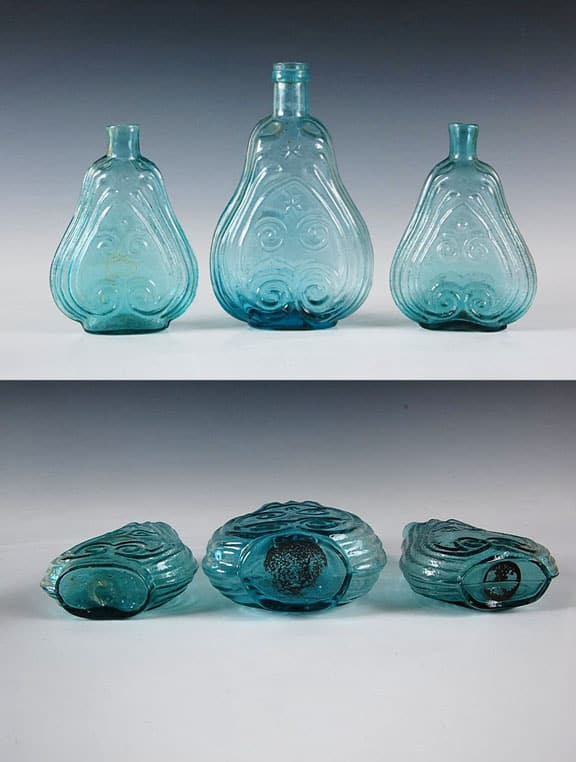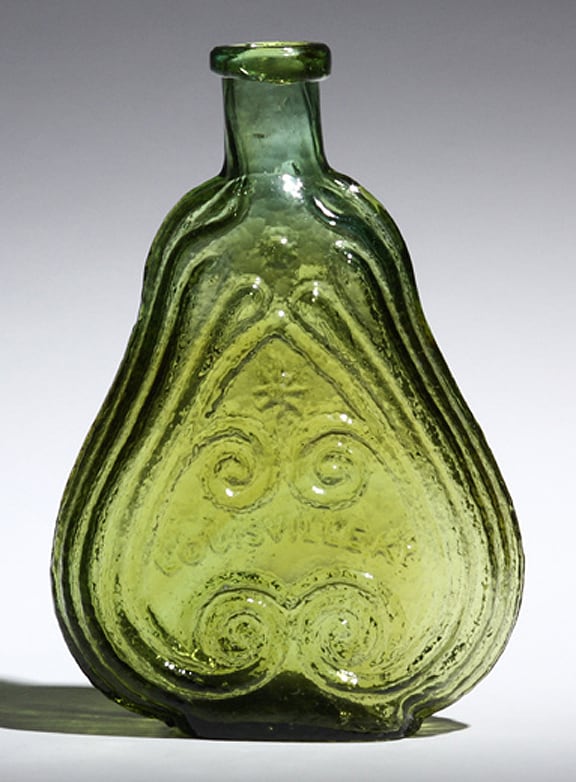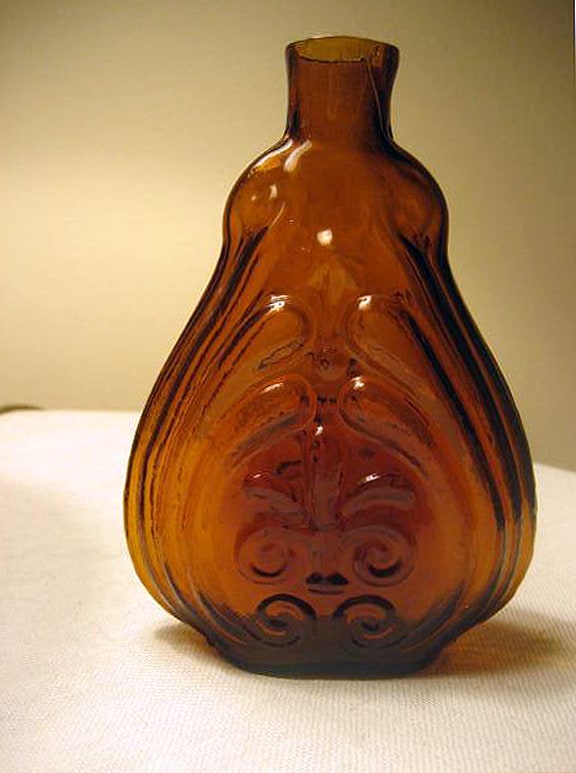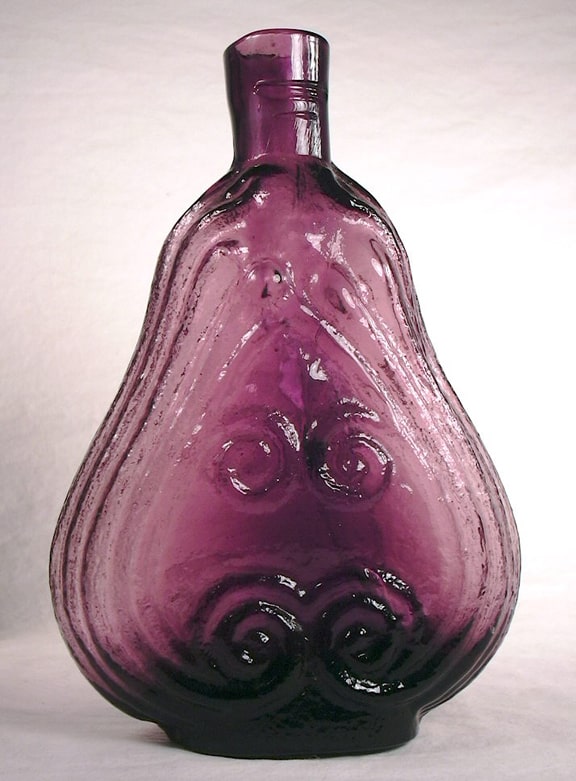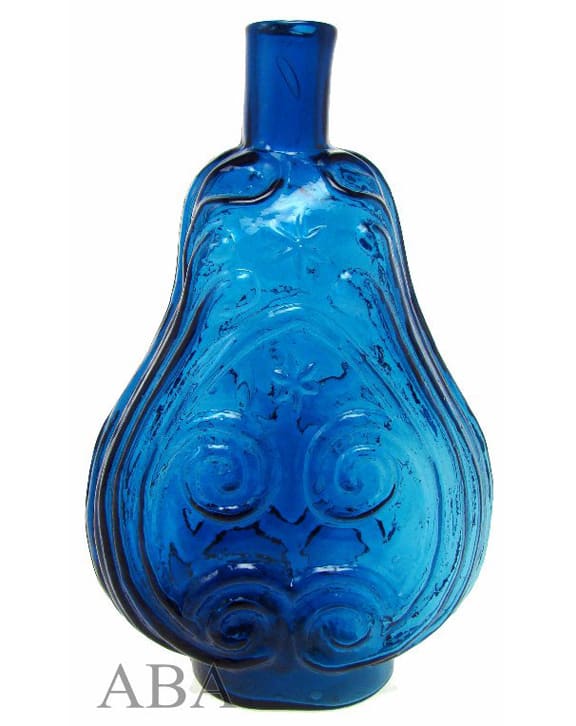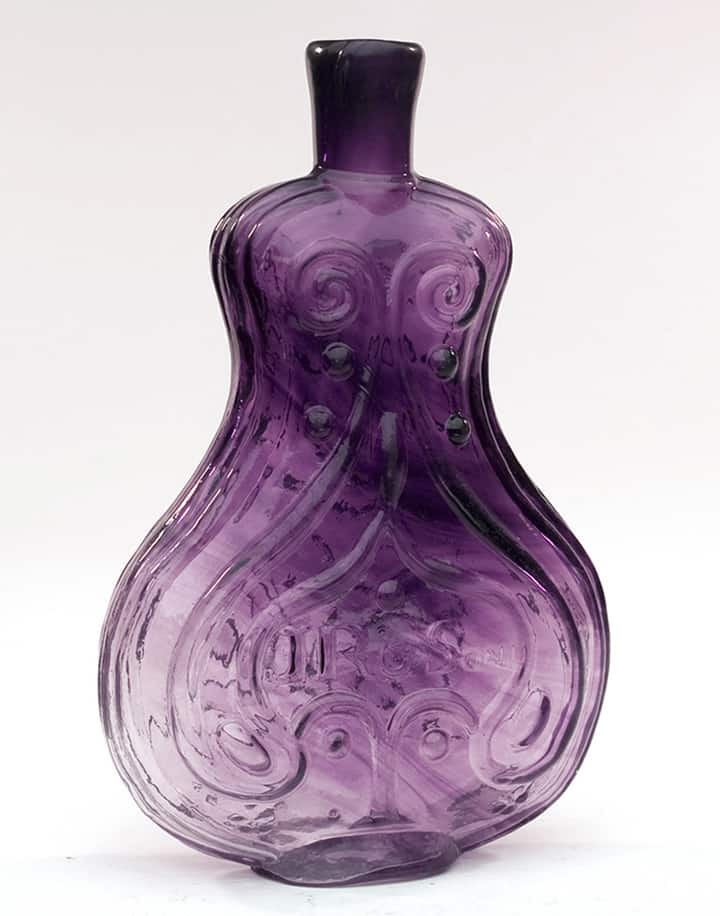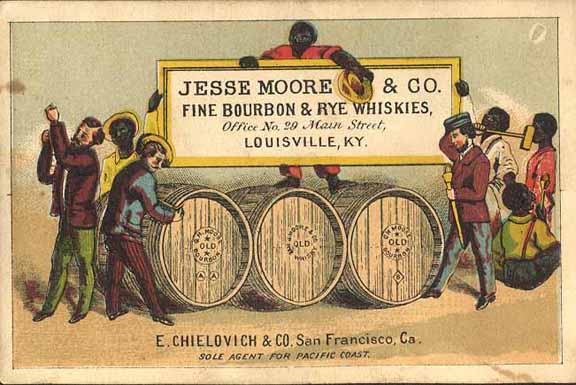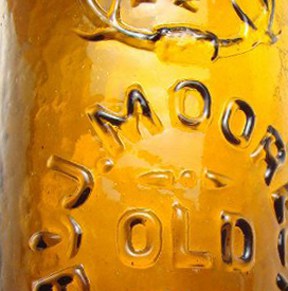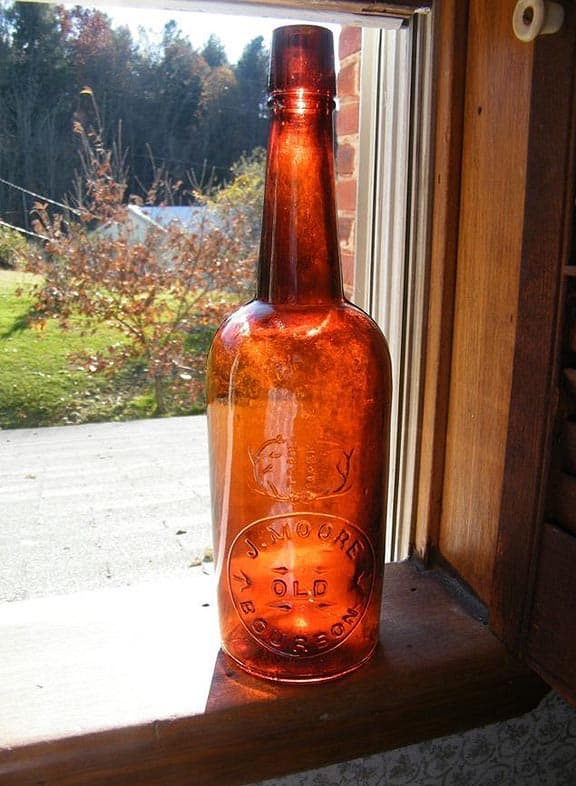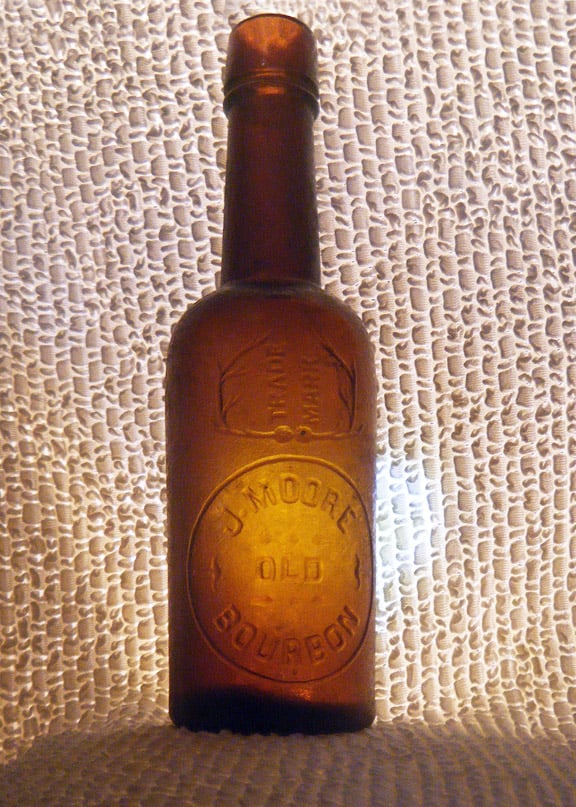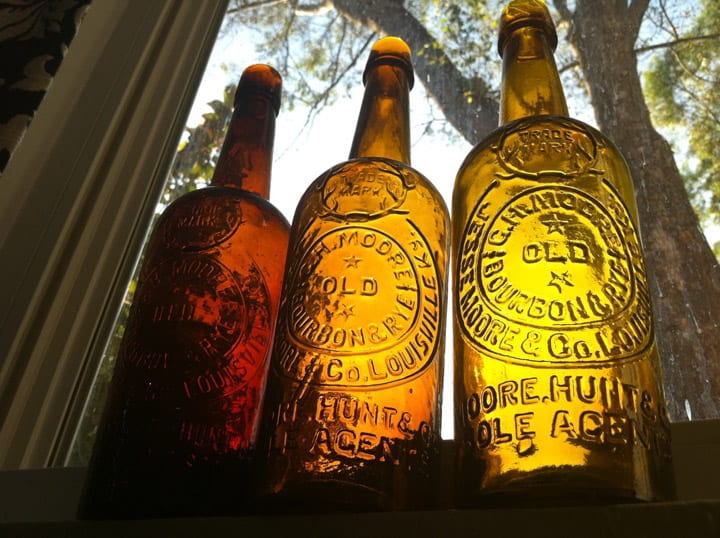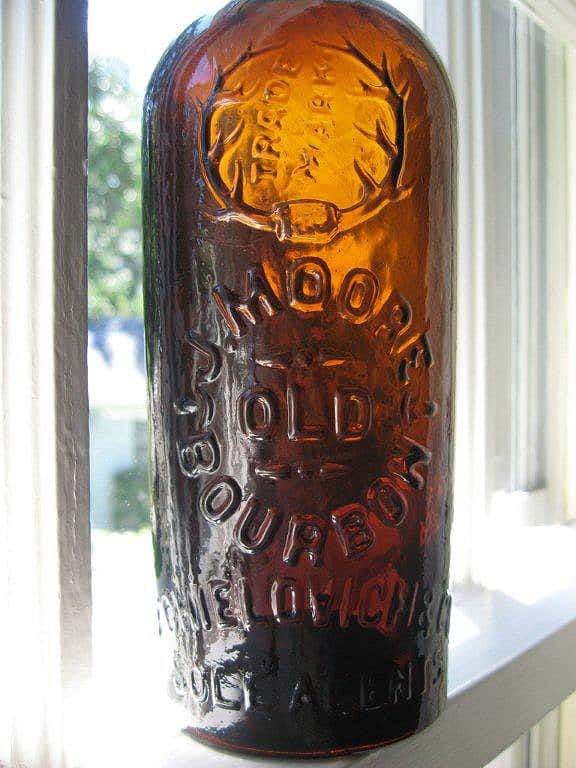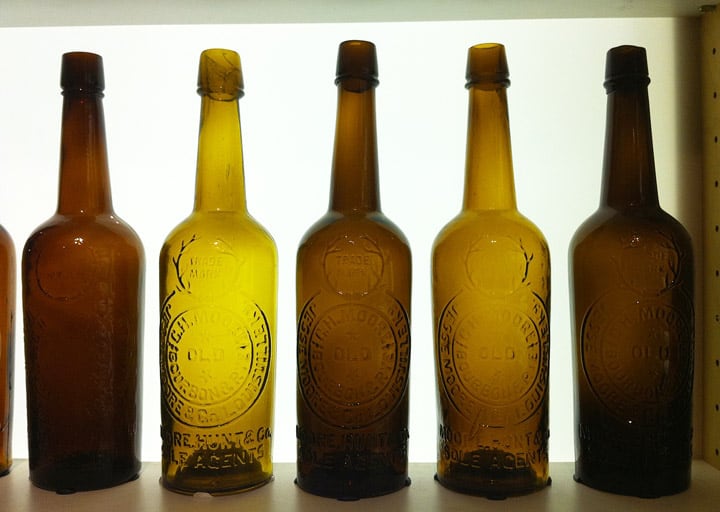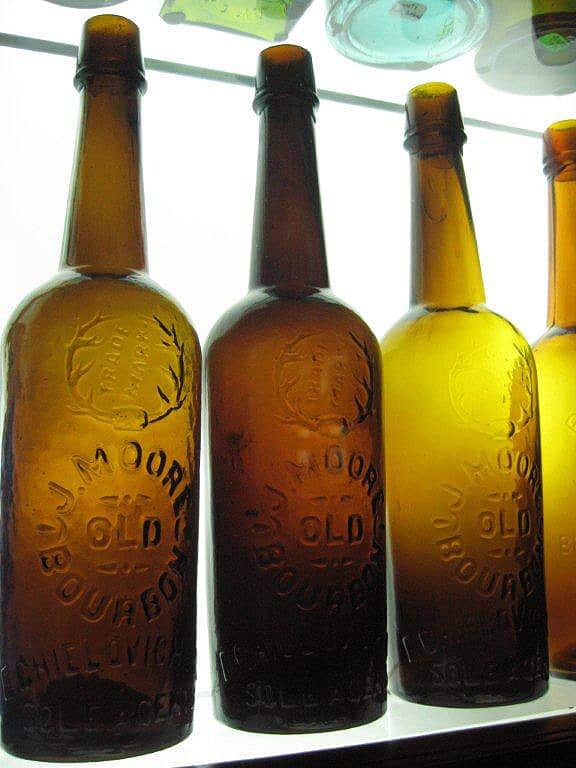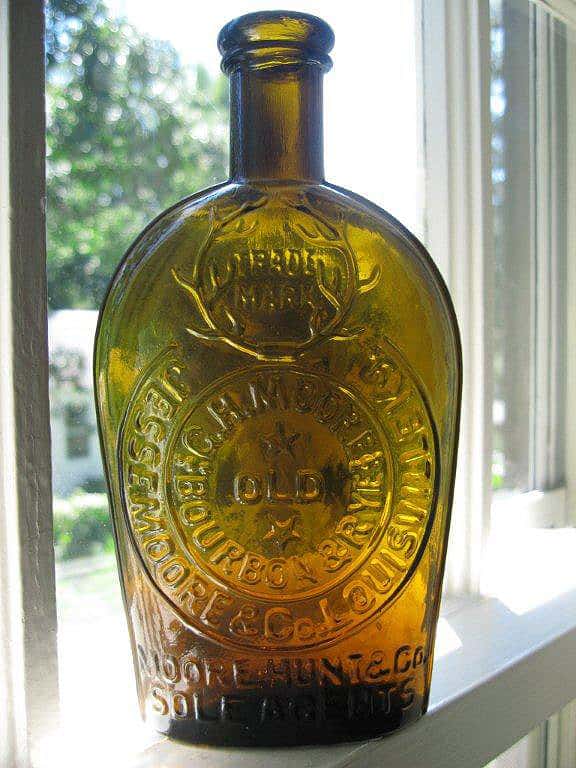Log Cabin Series – Drake’s Plantation Bitters
28 November 2012 (R•090615) (R•090218) (R•110718)
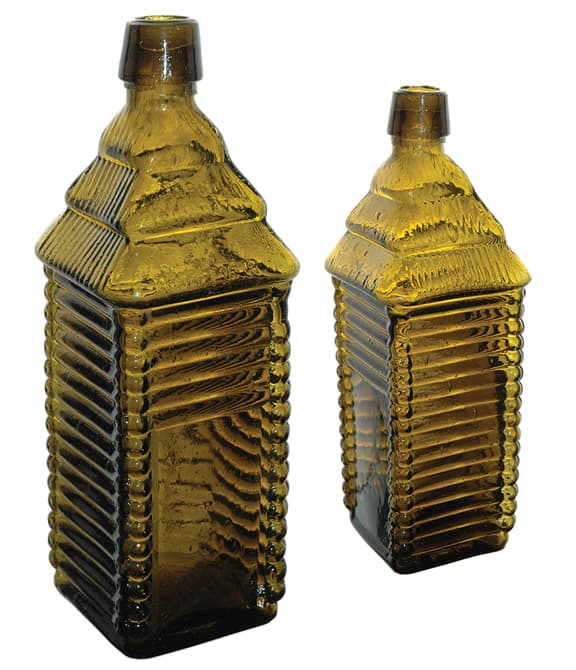 D R A K E ‘ S P L A N T A T I O N
D R A K E ‘ S P L A N T A T I O N
B I T T E R S
![]() There is no bitters brand that has been written about, talked about, collected or simply admired more than the classic Drake’s Plantation Bitters figural log cabin. You also do not have to be a bitters or figural collector to have a Drakes. I see them in figural, medicine, Civil War, cure, tonic, remedy, Western and just about every other type of collection. Just about everybody wants a Drakes or two in their collection. Some like myself, go for color runs.
There is no bitters brand that has been written about, talked about, collected or simply admired more than the classic Drake’s Plantation Bitters figural log cabin. You also do not have to be a bitters or figural collector to have a Drakes. I see them in figural, medicine, Civil War, cure, tonic, remedy, Western and just about every other type of collection. Just about everybody wants a Drakes or two in their collection. Some like myself, go for color runs.
Origins of Drake’s Plantation Bitters or Old Homestead Tonic
[Excerpts from the Evening Star, Wednesday, October 15, 1862]
Drake’s Plantation Bitters or Old Homestead Tonic are put up in Patent Bottles, representing a Swiss cottage and are an adornment to the sideboard.
Drake’s Plantation Bitters or Old Homestead Tonic is made from St. Croix Rum, Sugar Cane plant and Calisaya or King’s Bark.
This medicinal make-up was unknown until the middle of the seventeenth century. The natives of Peru were generally supposed to have been long previously acquainted with its most wonderful medicinal qualities. Humbboldt makes favorable mention of the febrifuge qualities of this article as an antidote to Fever and Ague, Intermittent and Malarious Fevers, in his extensive South American travels.
The Countess, wife of the Viceroy of Peru, having in her own person experienced the beneficial effects of the bark, is said, on her return to Spain, in the year 1640, to have first introduced this remedy into Europe. After its introduction it was distributed and sold by the Jesuits, who are said to have obtained for it the enormous sum of its weight in silver. From this circumstance it was called Jesuit’s Powder, a title which it retained for many years.
In 1658, we are told that an Englishman by the name of Sir John Talbot employed it with great success in France, in the treatment of Fever and Ague, Dyspepsia, Nervous Affections, Loss of Appetite, Weakness and Debility, Palpitatation of the Heart, Diarrhea, &c, &c. under the name of English Powders; at length, in the year 1679, he sold the secret of its origin and preparation to Louis XIV., by whom was divulged. It is now the standard remedy, and is employed in the preparation of the Plantation Bitters.
On Peachridge Glass alone, there has been eight unique and dedicated posts (see below) on Drake’s.
Read: The “Blue-Green” Drakes Mystery
Read: Drake’s Plantation Bitters Label Question
Read: I brought a few of my Drakes to the Houston Show
Read: Information on the Drake’s Plantation Bitters Variants
Read: What is an Arabesque Drakes Plantation Bitters
Read: Drakes Plantation Bitters – Encased Postage
Read: One of the Crudest Drakes You Will Ever See
Read: Drake’s Plantation Bitters Article Raises Serious Questions – Cecil Munsey, PhD
So what do we do here when it has probably all been done before? Well….we can create a Drakes ‘Allstar Page’ or a ‘Best of Drakes’ page or a David Letterman styled ‘Top Ten Reasons to Collect Drake’s’ list. Let’s do that! I always disliked when musical groups did a compilation album but none-the-less, I am going to go deep in my files and show you why this bottle is so great. So here we go with the Top 1o Reasons to Collect Drakes. And by the way, these are my top 10 reasons. You can switch them around or have other reasons. That’s cool.
TOP 10 REASONS TO COLLECT DRAKE’S PLANTATION BITTERS
Reason #1o: Houston, We have a Patent on the Bottle
Some of the other cabin figurals have patents for the ingredients. Here we have an actual patent in 1862 for the cabin form bottle.
“Be it known that I, P. H. DRAKE of Binghamton, in the county of Broome and State of New York, have invented or produced a new and original Design for a Bottle…”
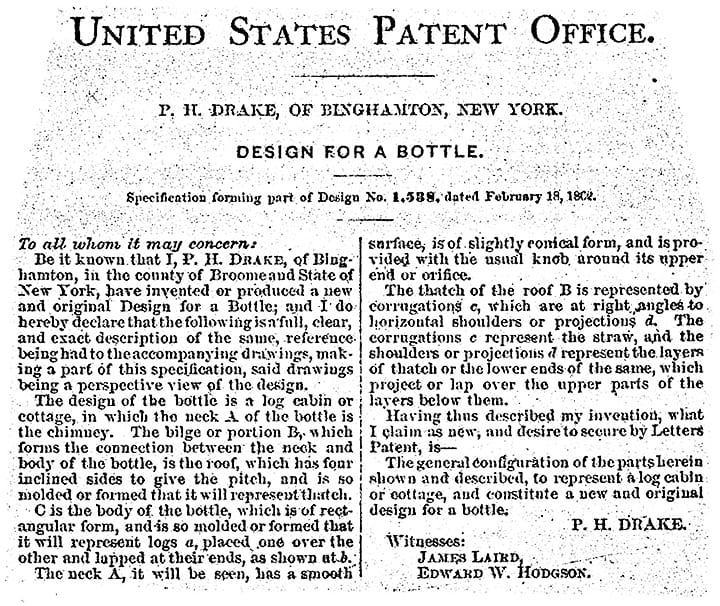
United States Patent Office – P. H. Drake of Binghamton, New York. Design for a Bottle – Specification forming part of a design No. 1538 dated February 18, 1862
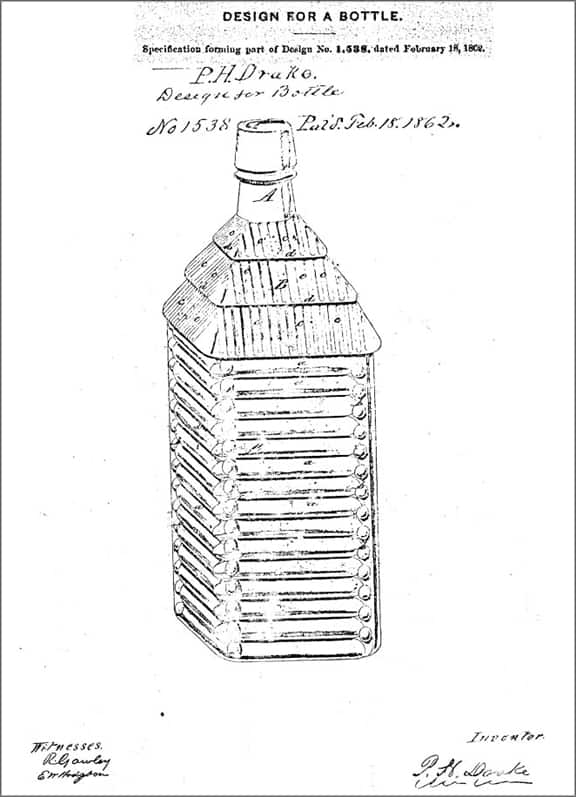
United States Patent Office – P. H. Drake of Binghamton, New York. Design for a Bottle – Specification forming part of a design No. 1538 dated February 18, 1862
Reason #9: Great Photographs of Tough Looking Characters Drinking Drake’s
There are a some great historical photographs of gents drinking Drake’s Plantation Bitters such as this young man posing with a mug and a bottle of Drakes. One can only hope that the bartender kept that mug frosty to make that Drake’s taste ‘oh so much better’. Obviously from his look, he has not had a drink yet…or maybe he just had a drink and froze.
Reason #8: You Can Find a Drake’s Just About Anywhere
Someone once said, “You could have lined up, end-to-end, all of the discarded Drake’s Plantation Bitters and created a glass line from New York to California…and back!” You find Drake’s in shipwrecks, privies, attics, under porches, behind walls, in grandmas pantry, in the barn, antique shops, yard sales, bottle shows, eBay, auctions, you name it. It is not really hard to find a Drake’s. It was not hard either to buy a Drakes on your way to the California gold fields or returning with your booty or lack thereof. Drake’s was sold everywhere.
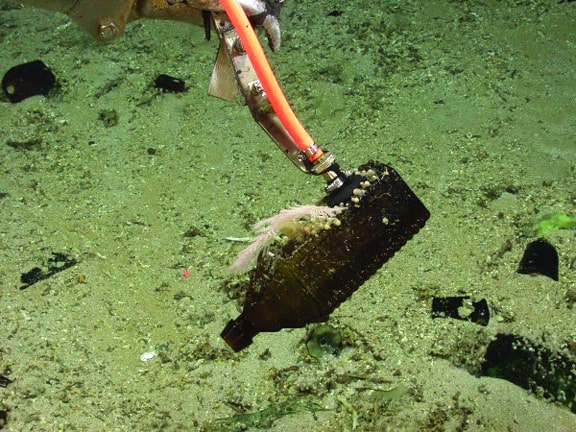
A Drake’s Plantation Bitters bottle is excavated from the SS Republic shipwreck site, 1,700 feet below the ocean surface. A soft limpet suction device attached to the manipulator arm of Odyssey’s Remotely Operated Vehicle (ROV), ZEUS delicately removes the bottle from the seabed. – Odyssey Marine Exploration
Reason #7: You get to Try to Figure out What S–T–1860–X means.
The cryptic slogan really locked the product into the minds of the public, bringing speculation as to its meaning. It was widely held that it meant Started Trade in 1860 with $10, but Drake later explained it in his post-war almanacs Morning Noon and Night. “It represents St. Croix—S.T. being the conventional equivalent of Saint, and 1-8-6-0 standing for the letters C-R-O-I, and so forming, with the concluding X, the word CROIX. Nothing can be more simple, or, it may be, more appropriate. St. Croix Rum is a stimulating basis of the Plantation Bitters, and it is, therefore in accordance with the fitness of things, that St. Croix should be the basis of their business shibboleth.”
[Steven James Anderson] I still firmly believe that had the ST been meant to imply “saint” for ST. Croix, there would not be a period after each letter on the encased postage, or a “dash” designation after each letter on the label. I have read each of the “Morning, Noon and Night” pamphlets cover to cover, and found no mention of the meaning of S-T-1860-X., The only historical account I referenced is; “The legend of the Plantation Bitters was that it meant “Sure thing in ten years from 1860.” That is, when the inventor had made the decoction, and submitted it to a friend as an invention and marketable article, the friend, so the story goes, told him that it was a sure thing for a fortune in ten years. So, acting on this thought, he had billed the United States, “S. T. 1860 X.,” and spent half a million advertising “S. T. 1860 X.,” before anybody knew what it was all about. From the book The Indian War of 1864 by Euene Ware. Chapter X. Rations of Whisky – Era of Bitters – Artemus Ward – Major
The first in order was ‘Plantation Bitters”; next, “Hostetter’s Bitters”; third, “Log Cabin Bitters.” By the time the war broke out these bitters had been advertised with an expenditure of money which at that time was thought remarkable. Plantation Bitters appeared in 1860, and every wall and fence and vacant place in the United States was placarded with the legend, “S. T. 1880 X.” For several months everybody was guessing what the sign meant. It was in the newspapers. It was distributed in handbills on the street. It was seen at every turn, “S. T. 1860 X.” After the world had long grown tired of guessing, there appeared the complete legend, “Plantation Bitters, S. T. 1860 X.” Plantation Bitters became the bottled liquor of the age. It was made out of alcohol, water and flavoring, and was really very attractive as to taste and results.
The legend of the Plantation Bitters was that it meant “Sure thing in ten years from 1860.” That is, when the inventor had made the decoction, and submitted it to a friend as an invention and marketable article, the friend, so the story goes, told him that it was a sure thing for a fortune in ten years. So, acting on this thought, he had billed the United States, “S. T. 1860 X.,” and spent half a million advertising “S. T. 1860 X.,” before anybody knew what it was all about. – The Indian War of 1864 by Eugene Ware
What do you think? Was Patrick Henry pulling our tail?
Reason #6: Well you’ve got 4-Log, 5-Log, 6-Log, Arabesque and Variants Galore!
With the D 102, D 103, D 104, D 105, D 105.5, D 106, D 106.5, D 107, D 107.5, D 108, D 108.5, D 109 and D 110 listings in Carlyn Ring and W.C Hams Bitters Bottles and Bitters Bottles Supplement there is plenty to keep the Drake’s collector interested. For the most part, collectors have ignored the lesser variances and focused primarily on collecting 4-log or 6-log examples. With the Arabesques, the rare 5-logs and other anomalies such as this monster bulbous D 107 Drake’s Plantation Bitters pictured below, we can really have some fun and specialize in a particular area. You really can not do this with any other bitters bottle. We are even finding new variations without embossing, with chamfered corners, knobbed logs etc. There is much more discovery.
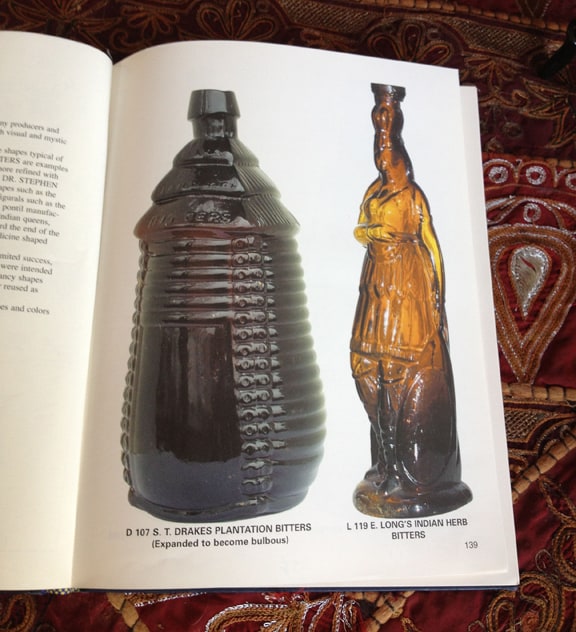
The unique D 107 Drake’s Plantation Bitters as pictured in Carlyn Ring and W.C. Ham Bitters Bottles Supplement.
Reason #5: Patrick Henry Drake was the P.T. Barnum of Advertising
“He had his slogan S-T-1860-X, painted on rocks, fences and sides of barns.”
Calling himself COLONEL Drake, Patrick Henry was an aggressive self promoter, and included advertising signs in every crate shipped to retailers. The crates salvaged from the riverboat Bertrand contained gilded glass signs promoting his bitters. He had his slogan S-T-1860-X, painted on rocks, fences and sides of barns. He advertised in about any newspaper that sold space, and had even unsuccessfully tried to have his S-T-1860-X slogan painted on Niagara Falls, Mount Ararat and even the pyramids in Egypt. There was even facsimile currency advertising his product as pictured below.
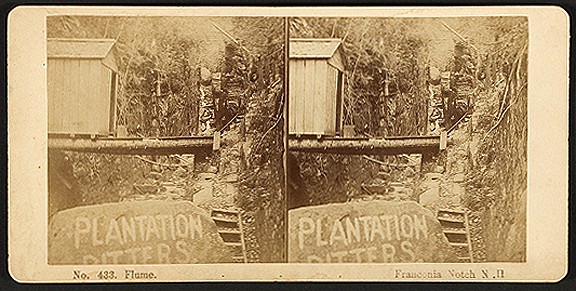
Plantation Bitters Stereoscopic Card, America, 1865 – 1875. Black and white photographic image depicting the Flume Gorge at Franconia, New Hampshire with “Plantation / Bitters” painted in big letters on a large boulder. – Meyer Collection
Reason #4: Where Else Can You See Three Top Hobbies Merging?
I was a stamp collector first. My father collected coins when I was a child. This is a ‘trifecta’ for me. Stamps, coins and bottles all joining together with Encased Postage.
On August 12, 1862, John Gault received a patent for his ‘Design for Encasing Government Stamps’—that is, a design for encasing stamps for use as currency. Gault’s plans called for the corners of a postage stamp to be wrapped around a cardboard circle. A thin, transparent piece of mica covered the stamp, and an outer metal frame held these items secure. A heavier brass backing, suitable for advertising purposes, completed the piece. The size of a quarter but much lighter in weight, the object encased stamps from the 1861 issue-the 1-cent, 3-cent, 5-cent, 10-cent, 12-cent, 24-cent, 30-cent, and 90-cent. Gault sold his encased postage at a small markup over the value of the enclosed stamp and the cost of production.
Reason #3: Ahhh…. The Gorgeous Revenue Stamps
Revenue stamps are the fine Persian rugs of stamp collecting and early American history and product taxation. You get to learn about a later Drake’s partner Demas Barnes who was a man of many talents. He served as a Congressman, trustee of the Brooklyn Bridge, director of the Long Island Railroad, and owner of proprietary medicine patents bought from various developers. The first private die stamps used by Barnes featured a facsimile of his signature at the bottom, with both his initials. They were issued in three denominations, all of which were issued in black from March of 1863 until early February, 1865. 723,184 of the one-cent, 202,650 of the two-cent and 1,619,483 of the four-cent stamps were issued on old paper. Look at these great examples below from rdhinstl.com.

Patrick Henry Drake and Demas Barnes formed a partnership in 1861 to manufacture and market Drake’s Plantation Bitters. In 1867 Barnes and Drake dissolved their partnership and Plantation Bitters was transferred to P.H. Drake & Company, with the dies to the horizontal Barnes stamps. The two-cent and four-cent dies were altered to include the new name and a picture of the distinctive log-cabin bottle Plantation Bitters was sold in. The two-cent stamps were issued from January, 1869 through June 21, 1871. 55,128 were printed on old paper. The four-cent stamps were issued from January, 1869 through March, 1875. 1,341,142 were printed on old paper, and 657,152 on silk paper. The copy above is on old paper. – rdhindstl.com
Reason #2: The Great Labels of the Drake’s Plantation Bitters
You learn from other great collectors such as Drake’s authority Brian Shultis: “This is the only black with gold lettering S.T. DRAKE’S PLANTATION BITTERS label I have ever seen. I thought it might be unique to the 5 log mold, but Micheal George had a 5 log with the normal white label (black lettering). This label has a log cabin pictured where the usual labels have a more Plantation type house. This is a real stumper for me. ANY INFO out there?”
And the #1 reason to collect Drake’s Plantation Bitters, you guessed it… Color!
Reason #1: Drop Dead Killer Colors
Of course I am going to say color as I specialize in color runs! The Drake’s Plantation Bitters come in more colors than any other bottle I can think of. Did you know that an old timer I know swears he saw an advertisement in 1940 for a cobalt blue Drake’s? He always says, when I remind him, that he is still looking for the magazine in his thousands of old magazines stacked in his house and garage. I am also hoping that I win the $500 million Power Ball Lottery today. Better odds than finding a cobalt blue Drake’s?
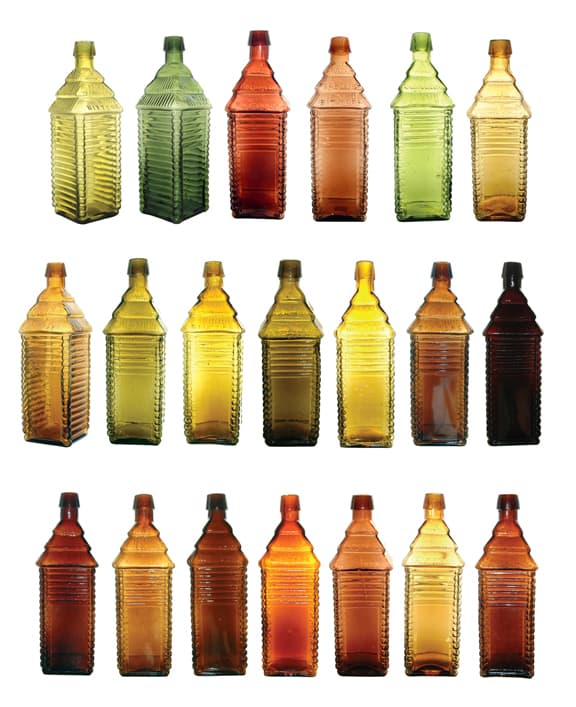
6-log Drake’s Plantation Bitters colors. I still need to add my blue-green, pink and emerald green examples.

